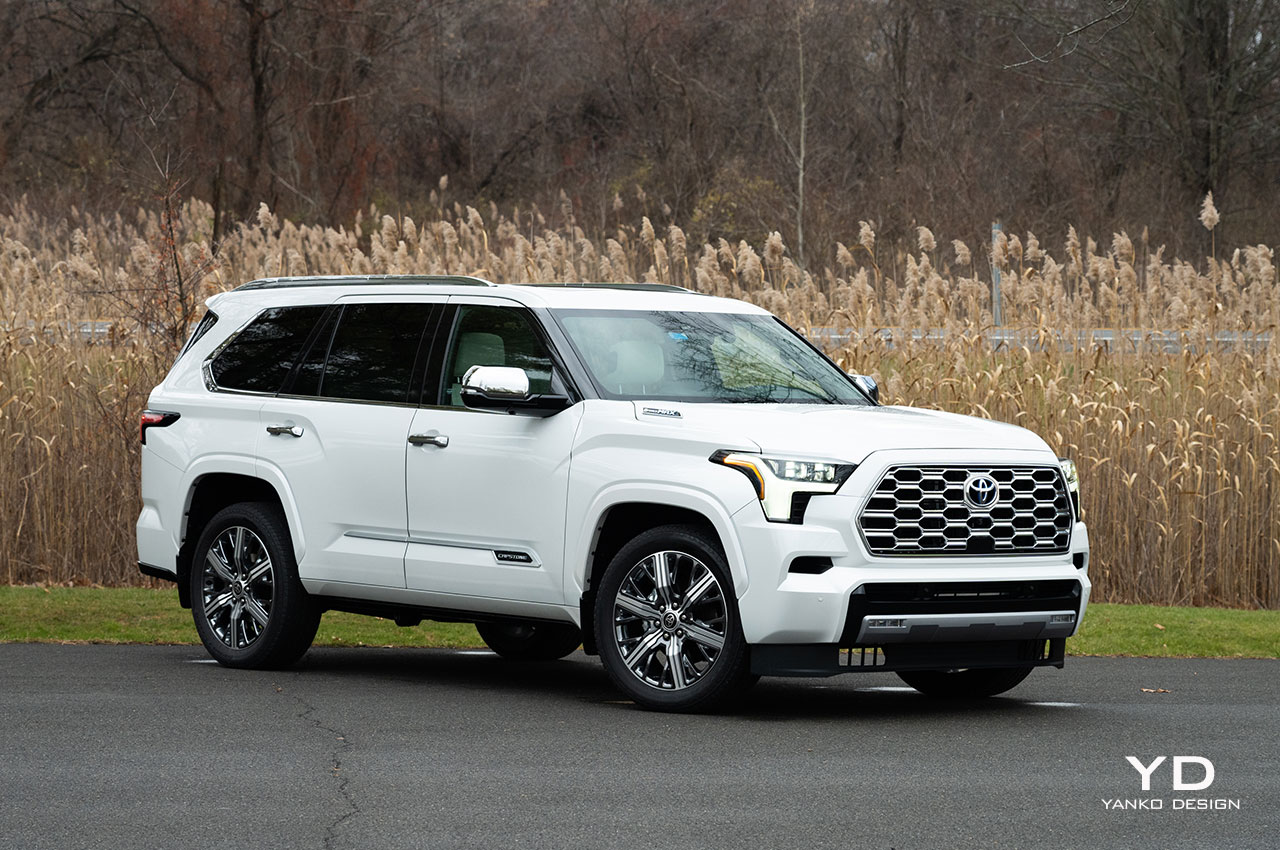
PROS:
- Bold, stately looks
- Good power
- Towing capacity
CONS:
- Cramped third row
- Compromised storage
Sometimes you look at a car and look at the name of the car and you’re left with the feeling that the designers and engineers and product planners were pretty far down the list before everyone finally decided what to call the thing. That’s not the case with the Toyota Sequoia, which for the 2023 model year gets a much-needed full redesign.
The sequoia is a tree, of course, but not just any tree. Sequoias are the tallest trees in the world. If that weren’t enough, they’re also the heaviest. Apt, then, that Toyota chose that particular stoic woodland fixture for the name of its biggest SUV, a titanic, three-row machine that will stand large and proud in any company.
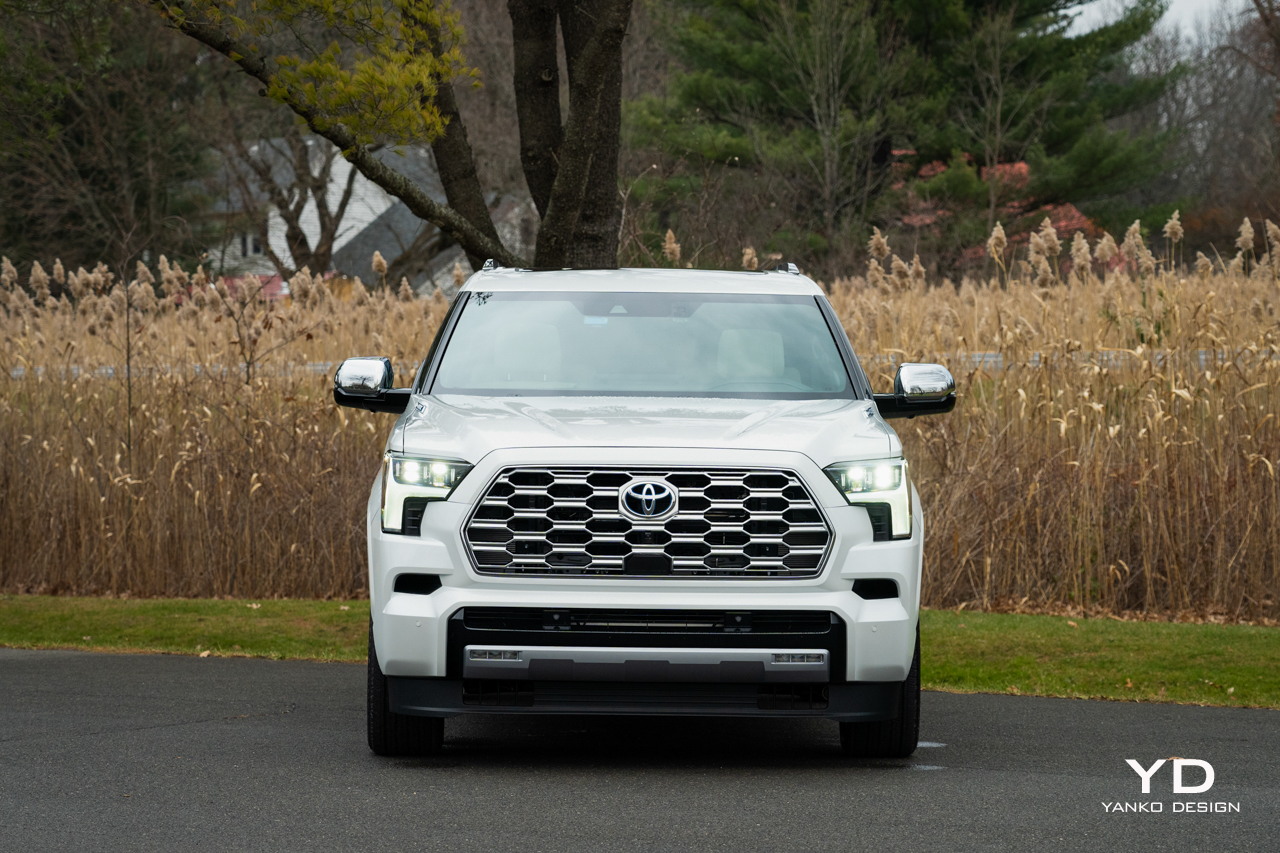
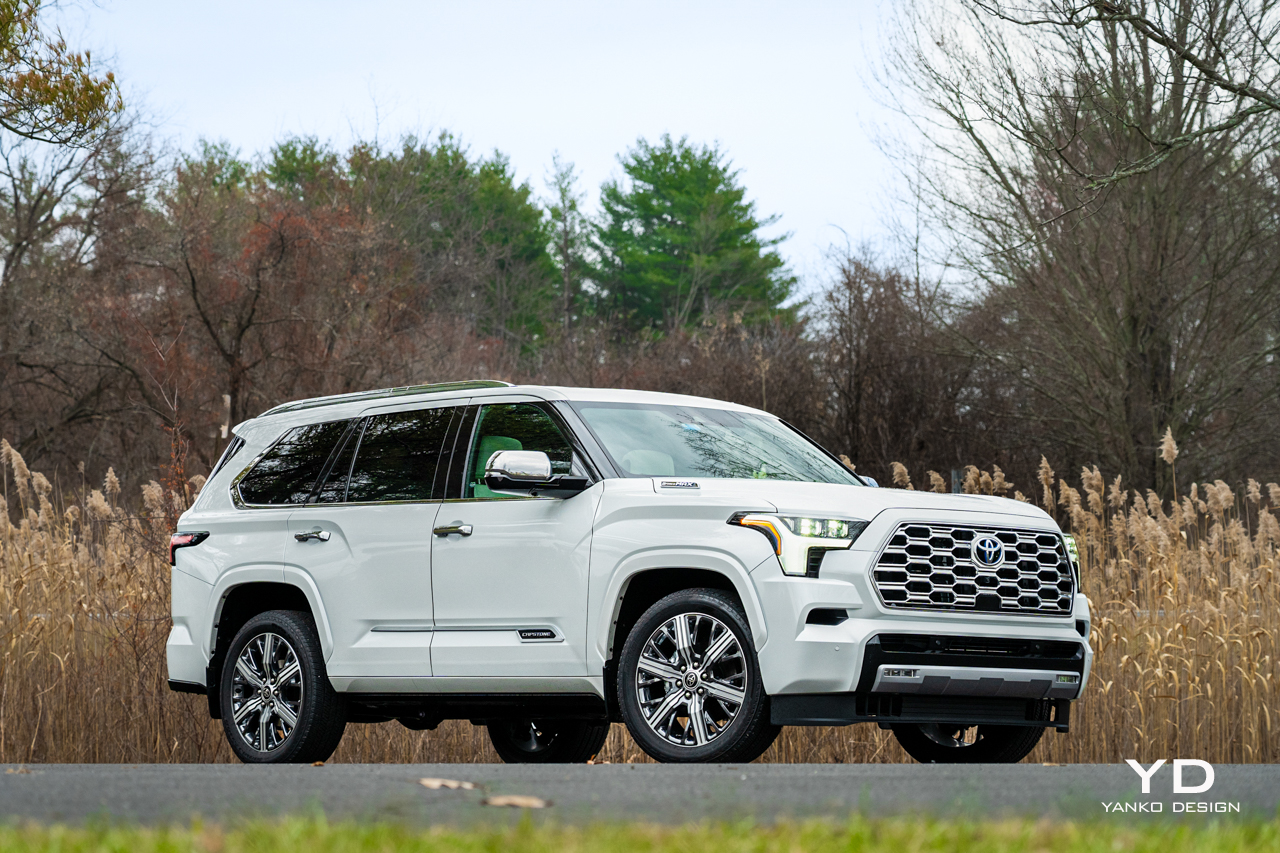
Volume Play
How big is it? Well, it’s just 7 cm shorter than Chevrolet’s titanic Tahoe, three cm shorter, and a mere three cm narrower. So, yeah, pretty big, but it fills those proportions well. It looks stately and sophisticated, especially in the Wind Chill Pearl white that my test car you see here was painted.
The Sequoia has always taken styling cues from the Tundra upon which it is based, and thankfully the edgier front-end on Toyota’s redesigned full-sized truck works great here on this full-sized SUV. Big creases in the fenders lead to the headlights up front and the taillights out back, while more creases down low on the doors ensure the thing doesn’t look too slab-sided.
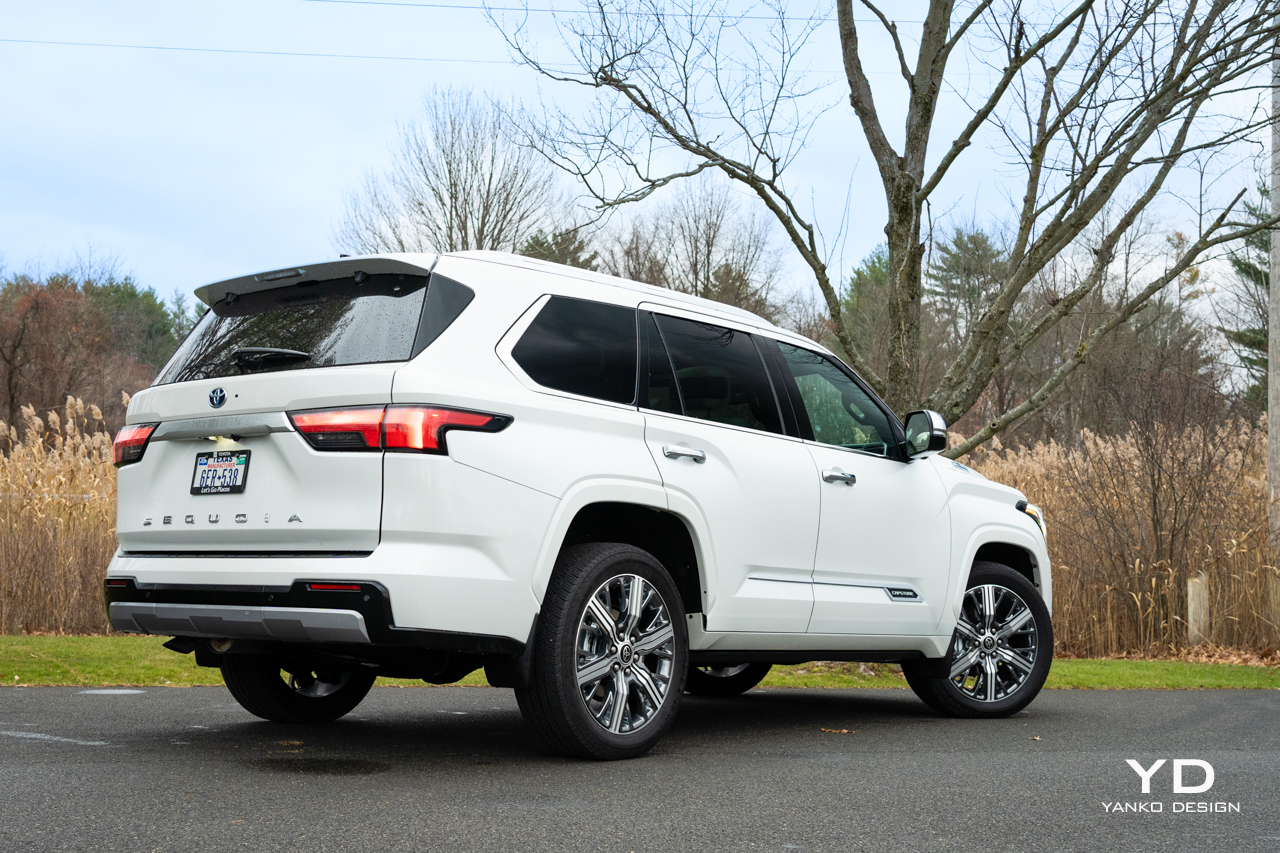
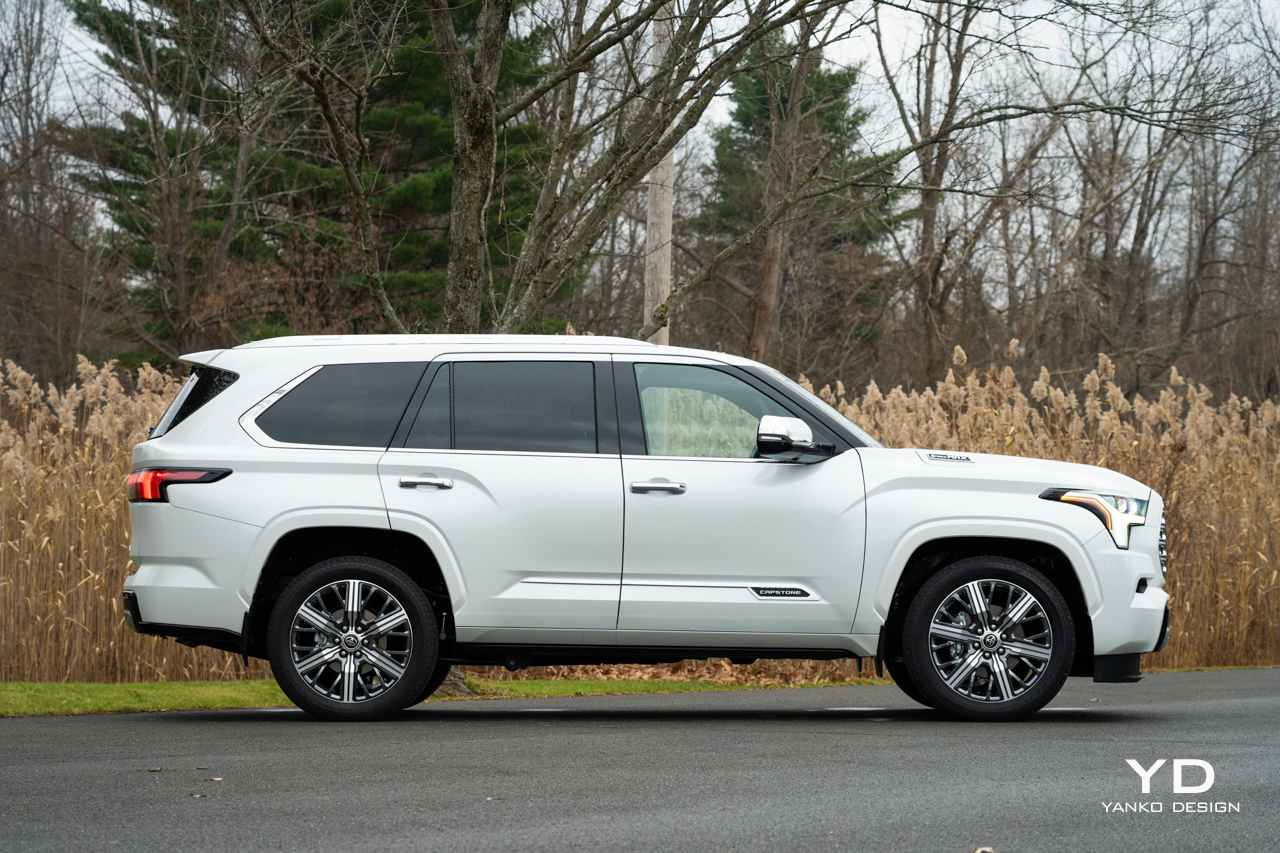
Those creases are highlighted with a bit of brightwork on this, the top-shelf Capstone trim, which pairs nicely with the massive chrome grille out front. (Lesser trims get rather more subtle black grilles, either with horizontal bars or the same honeycomb mesh you see here.) The wheels, too, are polished, measuring a massive 22-inches at all four corners, while the chromed mirror caps ensure there’s plenty of shine throughout.
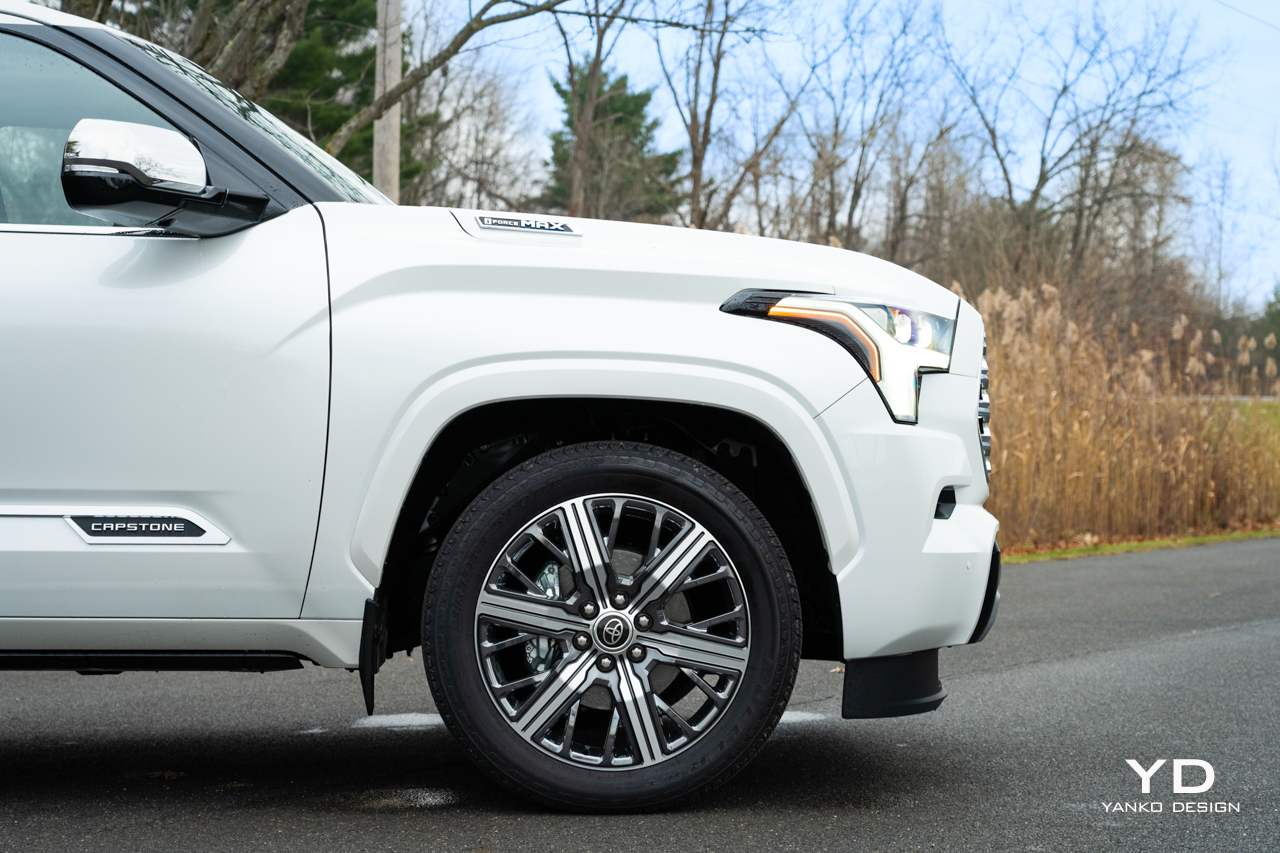
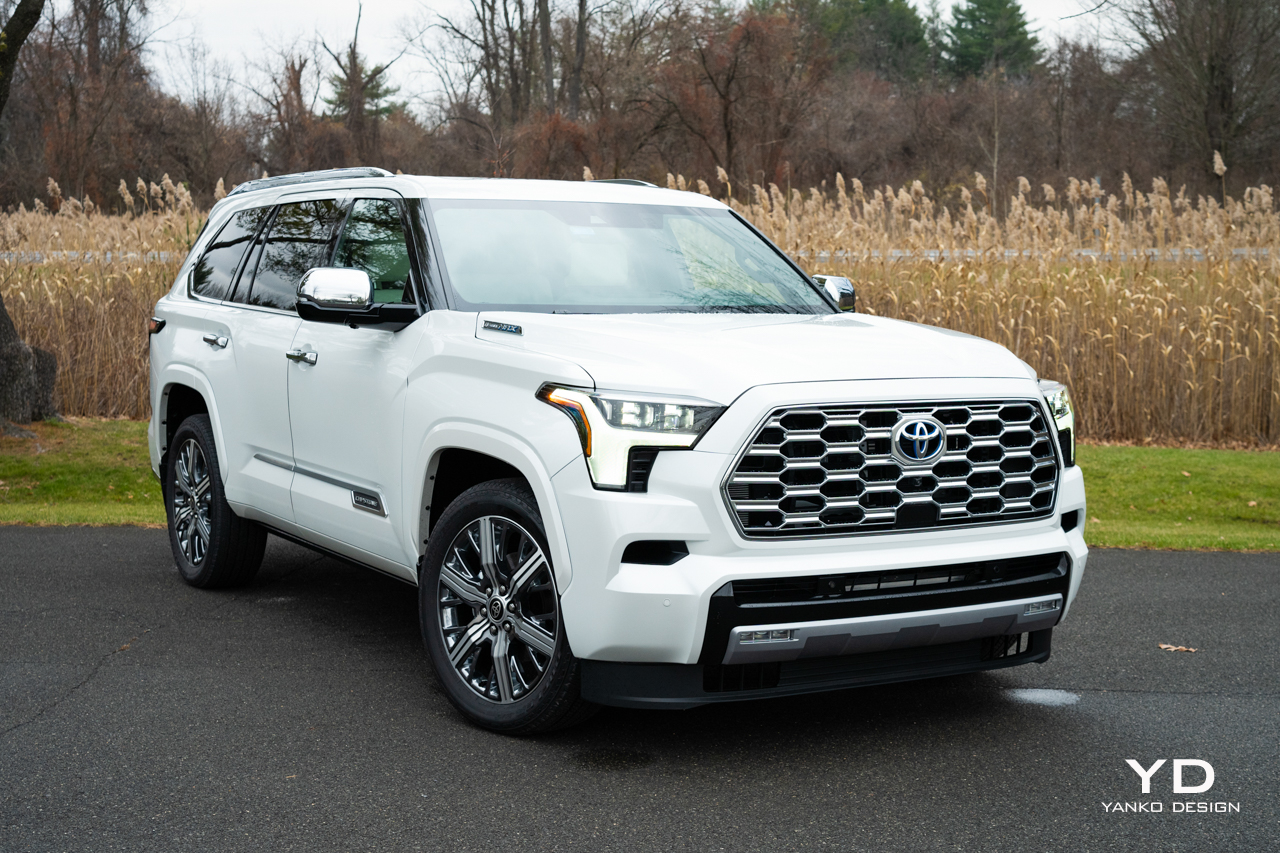
Interior
The interior, too, has a light and bright look and feel to match the exterior. That’s helped by the cream-colored leather, which the designers thoughtfully included only on the upper portions of the seats. This is a smart move, avoiding the gloomy doldrums found in so many automotive interiors yet also keeping the high-wear areas of the upholstery dark, so you won’t have to worry about stains from blue jeans or brown dogs or anything else that’s liable to come in contact.
That’s typical Toyota family friendliness, which is readily found on even this big, luxurious rig. There are enough cup holders scattered about here for even the thirstiest of little ones and USB charging for every seat, even in the way-back. There’s no in-cabin, middle-seat entertainment offered, but since everybody brings their own media for road trips these days that seems like a smart move.
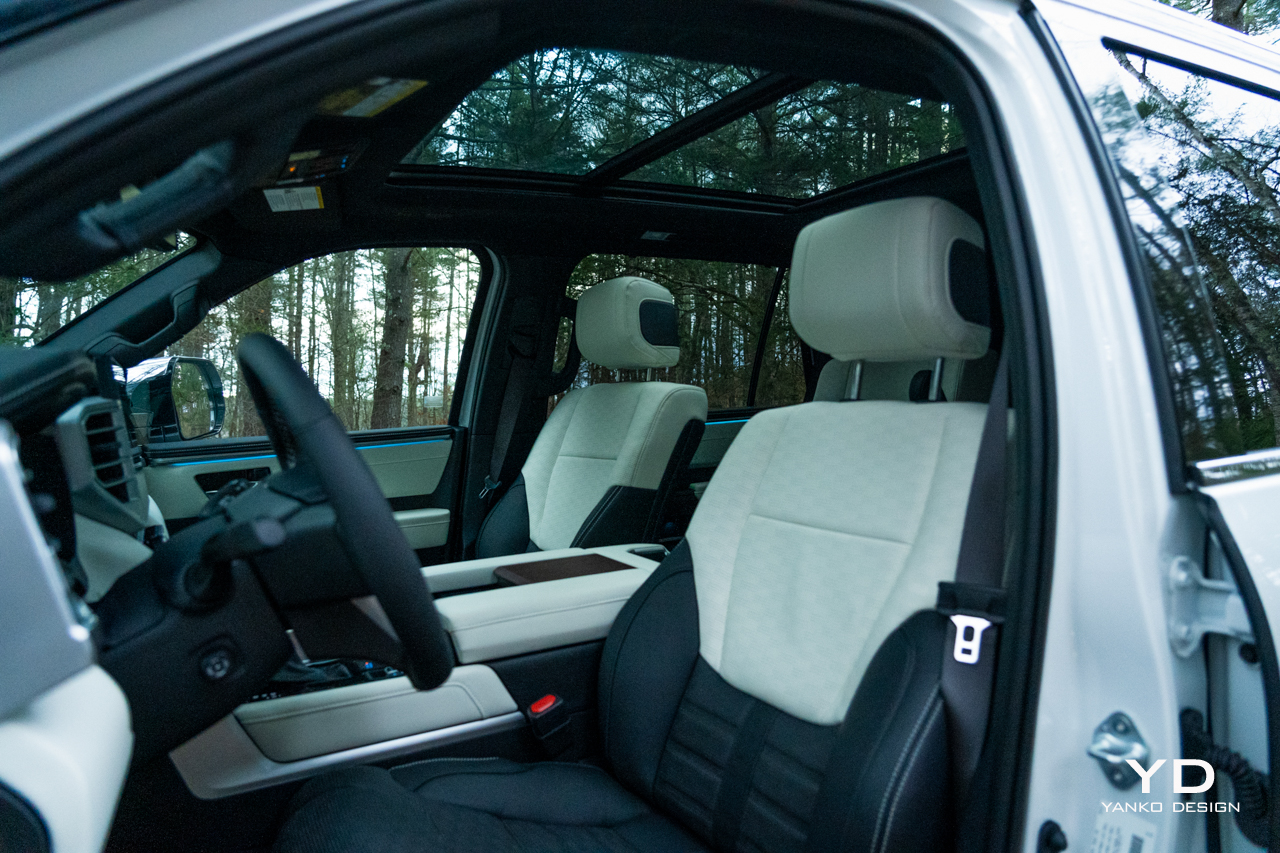
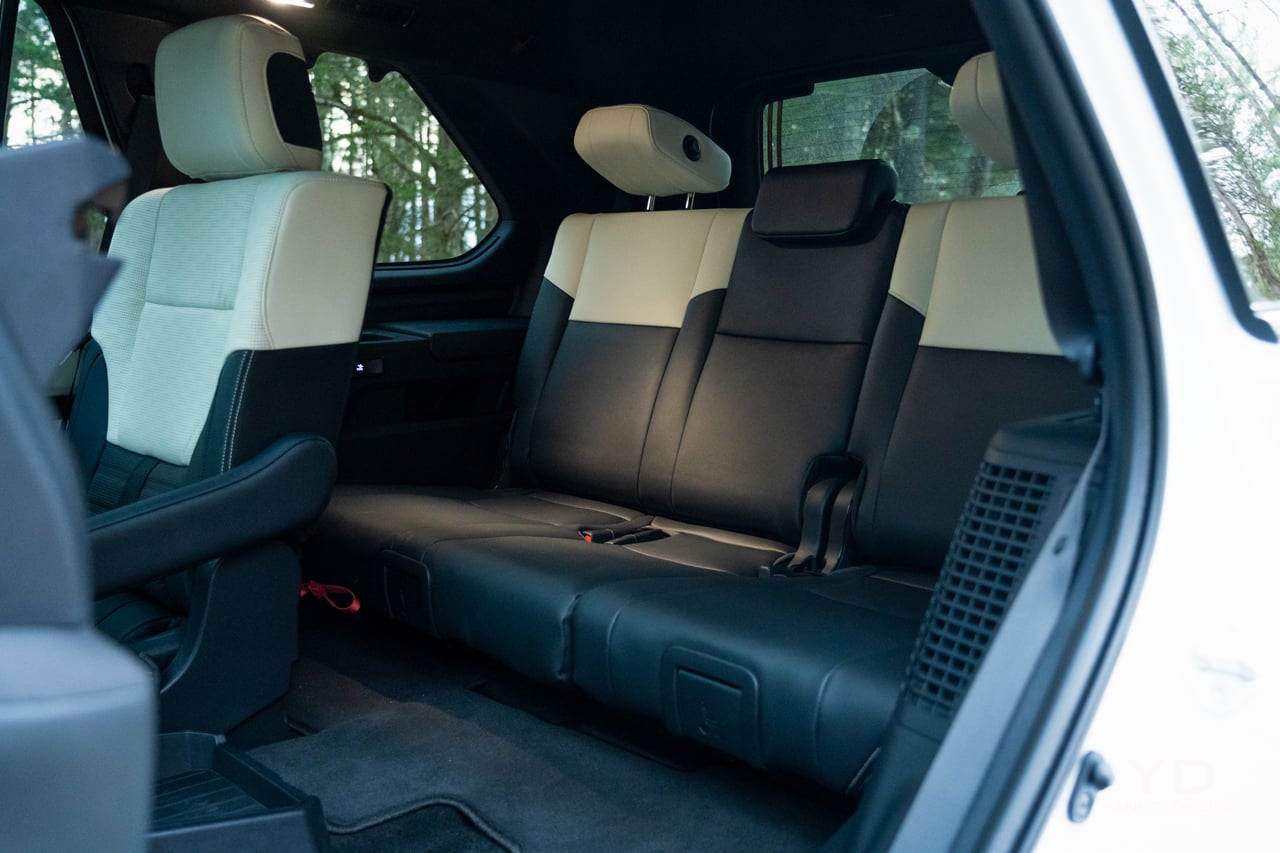
Starting at the back, the third row is actually reasonably easy to get into thanks to second-row seats that fold forward. But, once those seats are clipped back into position there’s not a lot of room left for luxuries like feet or knees. This is, then, a spot best reserved for little ones. Again, a pair of USB-C ports back here will keep their devices charged up, while manual window shades keep them out of the sun.
Or, if you’re rolling with fewer folks, these seats fold down at the touch of a button. They don’t, however, fold flush with the floor, which makes loading longer cargo a bit awkward. Toyota designers attempted to address this with a moveable rear shelf that can be lifted and then expanded to fill the gap. It’s functional and durable, but it’s also heavy and cumbersome to slot into place.
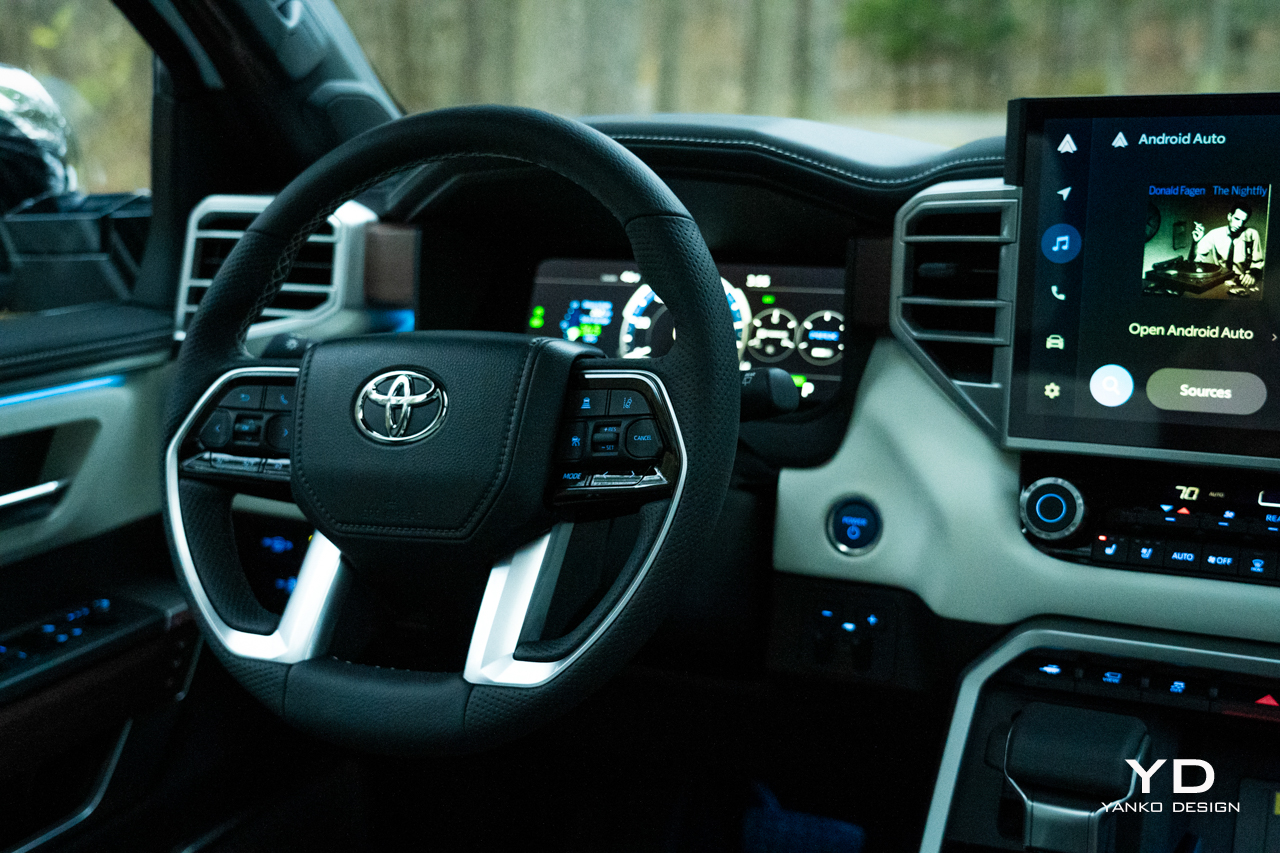
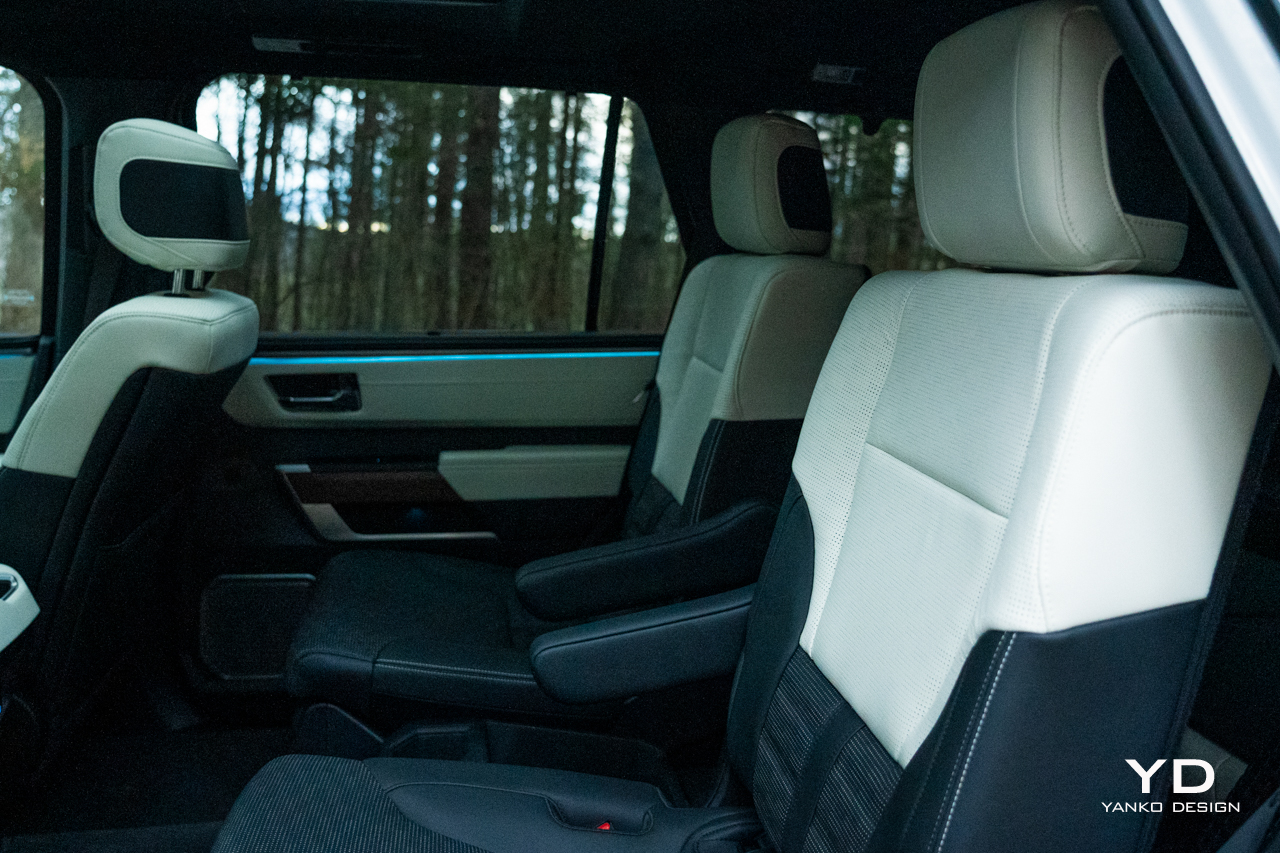
Second row seats are plenty comfortable, with enough head and leg room to suit adults. Middle passengers have their own USB-A and C ports, along with discrete HVAC controls and even a little plastic storage cubby between the seats.
Up front, though, is of course the most comfortable place to be. The heated and ventilated seats are plush enough for longer trips and wide enough for squirming around when those trips get to be a little too long. Those heaters are also extremely effective; you’ll never suffer from a chilly posterior here. Visibility is great and, with the massive panoramic sunroof, there’s never any shortage of light. That said, the view out the back is limited, whether you use the traditional rear-view mirror or the digital one. The digital mirror has the advantage of not forcing you to look past a truckload of passengers, but the flat colors and lack of contrast just make everything look awfully muted.
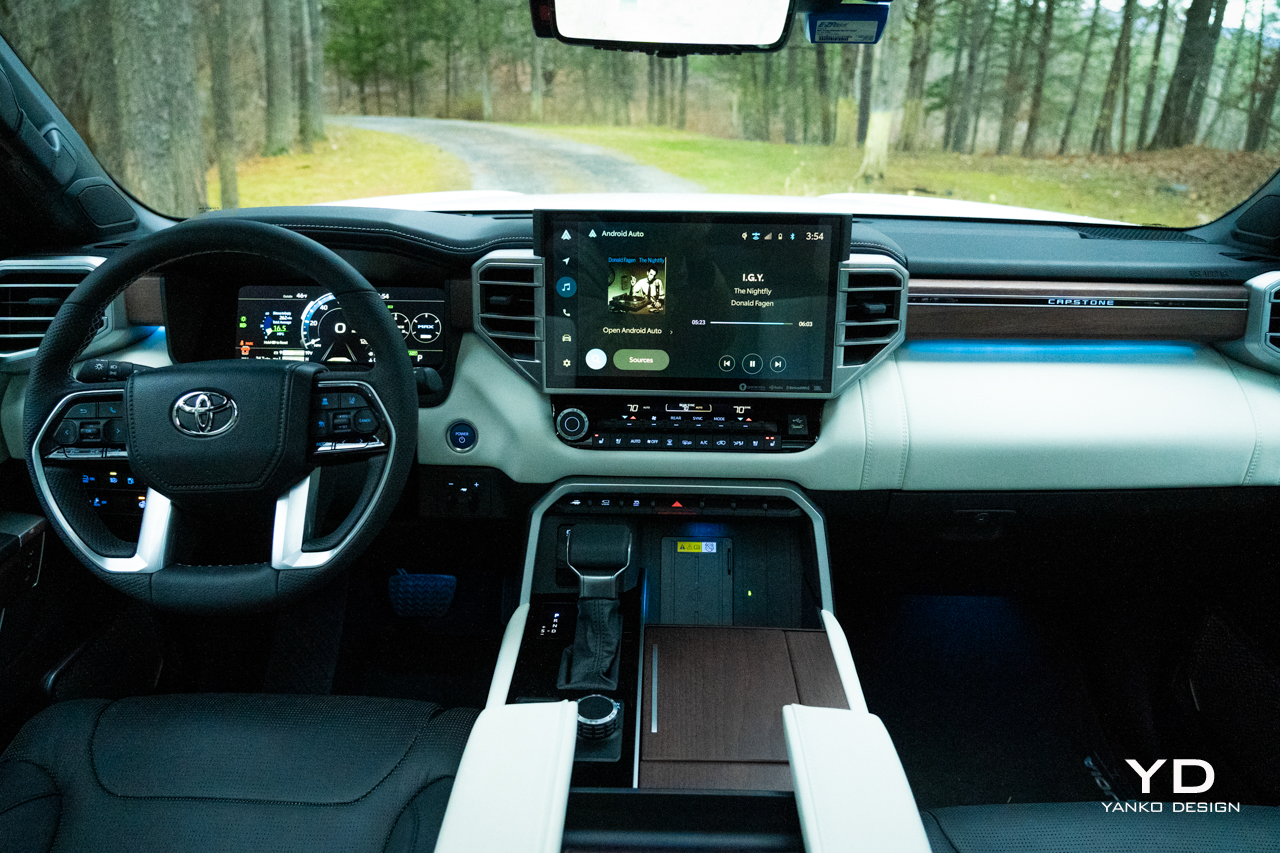
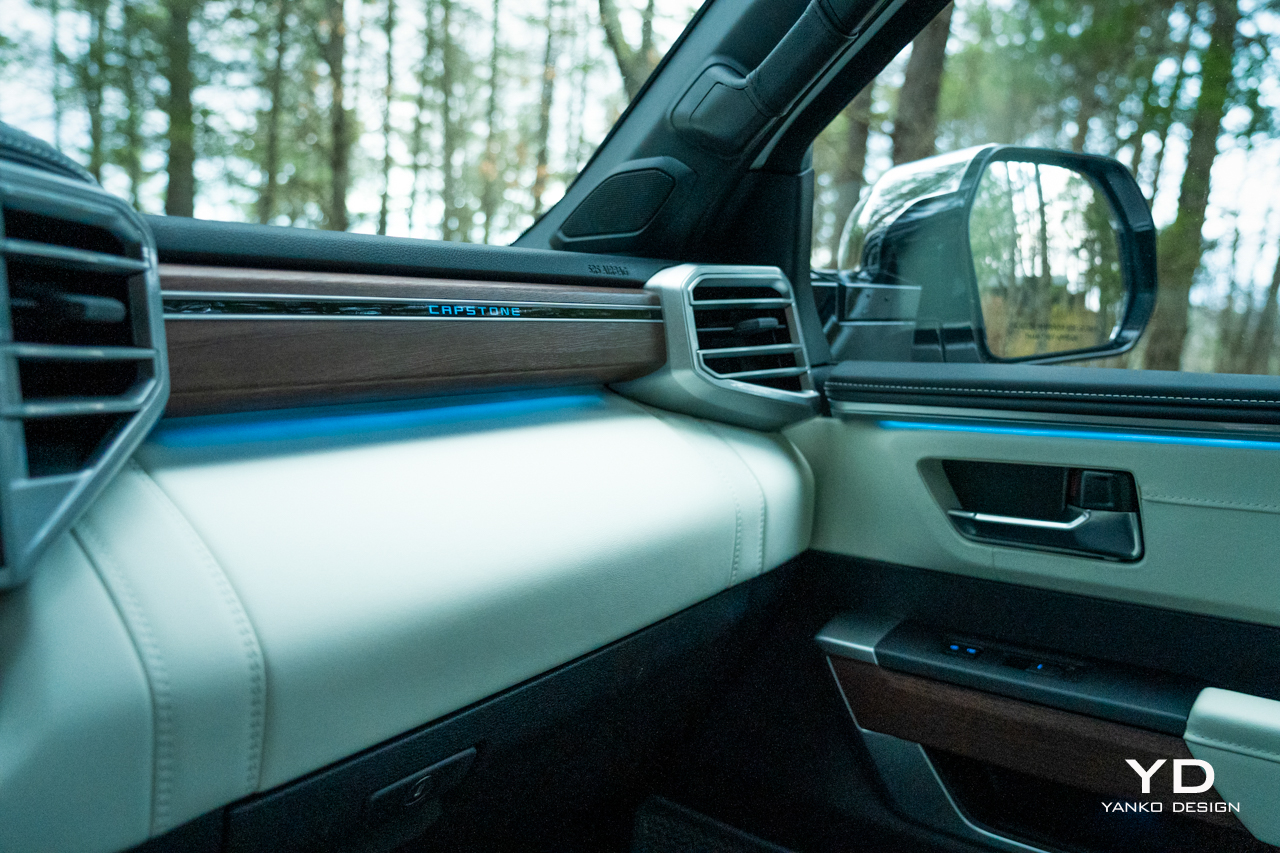
Tech
The other displays in the cabin fare better, particularly the 14-inch center display. It sits up high in the middle of the dashboard, up above a comprehensive set of HVAC controls — and a USB-A plug that looks a little bit randomly tacked on there. Toyota’s new (and cunningly named) Toyota Multimedia System is stripped down basic to the extreme, with few controls and menus, but despite that it works well. Everything is easy to find and everything is extremely snappy. Even the voice recognition is near-instantaneous. Overall, it’s a huge upgrade over previous generations of Entune.
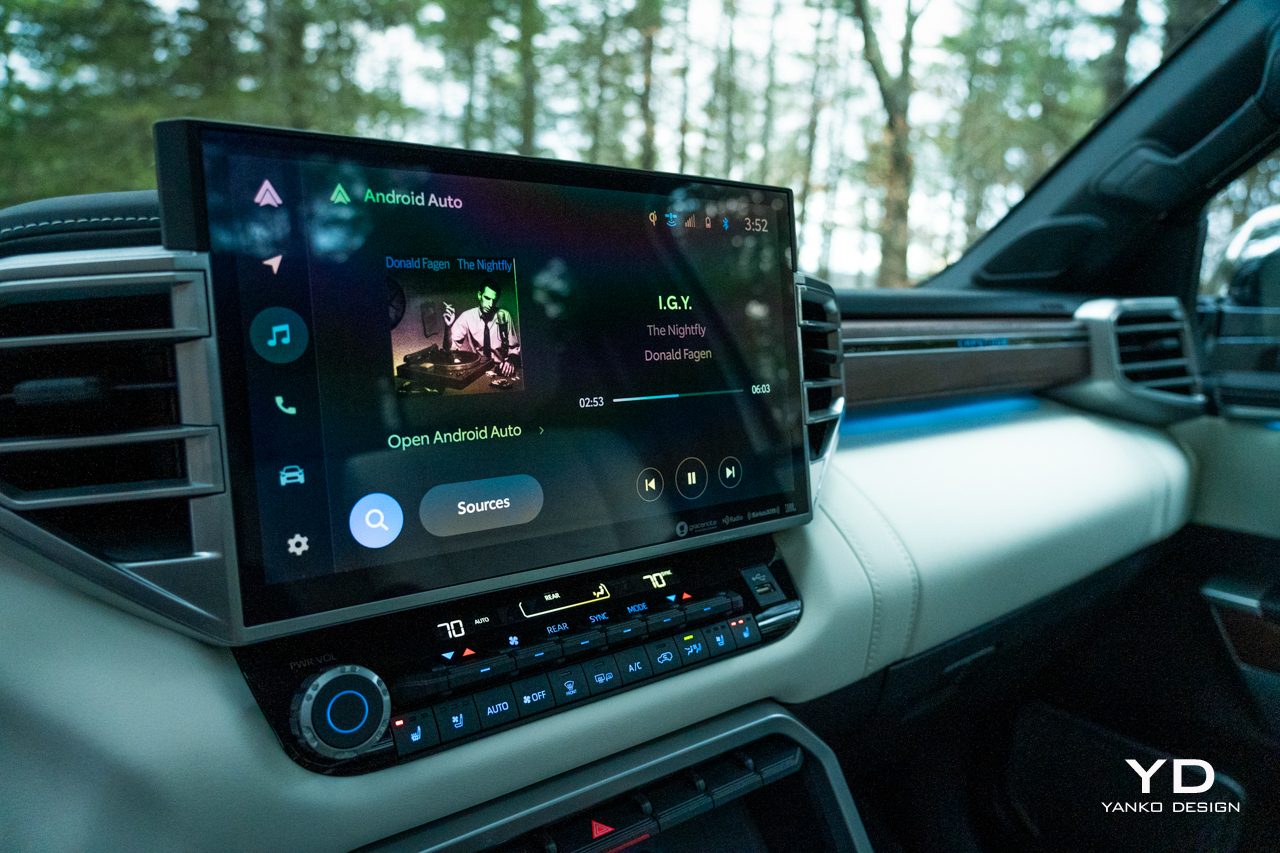
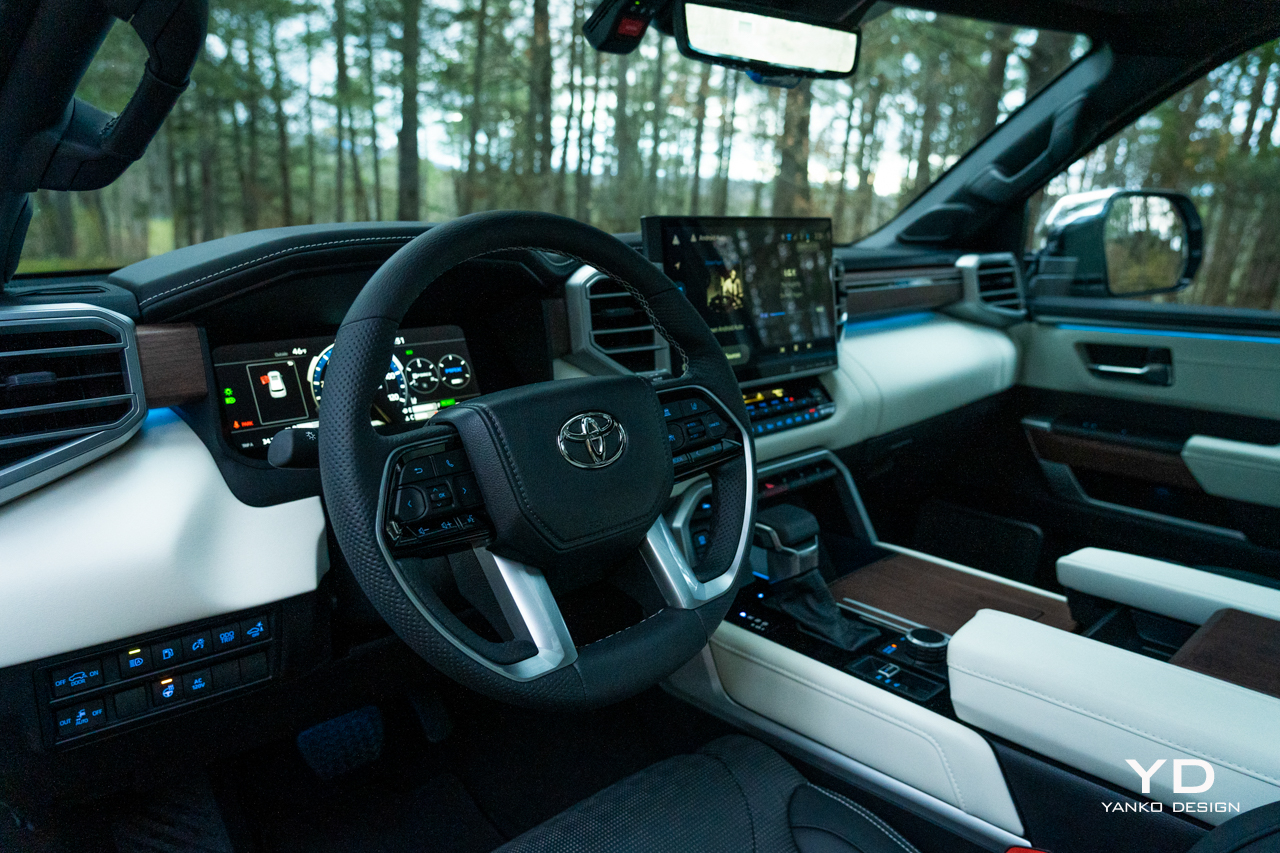
But, of course, you can supplant all that with Android Auto or Apple CarPlay, wirelessly here, with a Qi wireless charger capable of keeping your phone charged while it drives the in-dash experience.
Another display lives behind the steering wheel, a 12.3-inch virtual gauge cluster that displays all the information you need, with configurable displays showing everything from boost pressure to pitch and roll. If that’s not enough, a 10-inch heads-up display beams intel onto the windscreen, too.
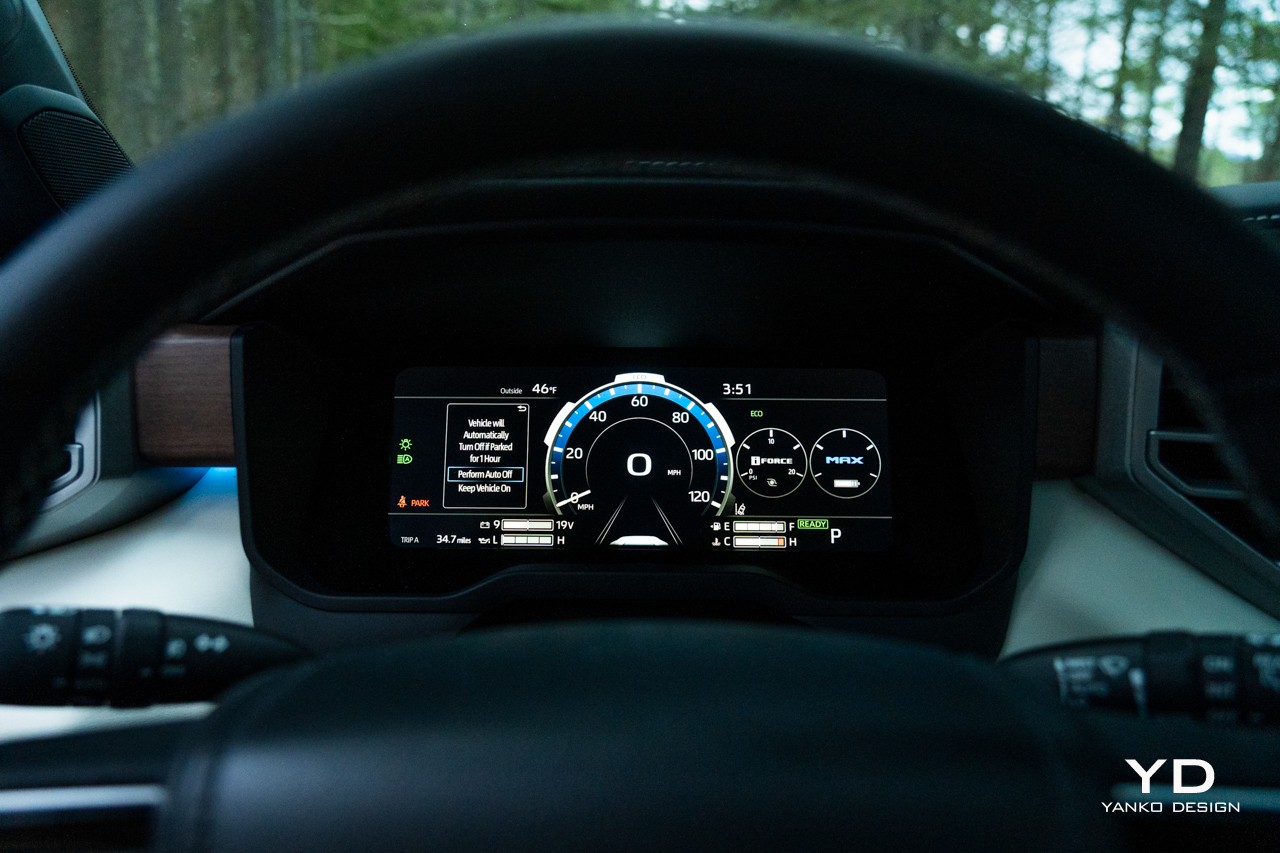
Performance
So you won’t be lacking information, nor power. Every Sequoia trim gets Toyota’s i-Force Max V6, with 437 horsepower and 583 pound-feet of torque thanks not only to a pair of turbos but also a hybrid system. Make no mistake: Toyota’s not really making this out to be an economical choice. In fact, the default gauge configuration shows the power from the hybrid system right next to the turbo boost pressure. This, then, is purely a power move, and the EPA figures show it: 20 mpg is the combined rating on 4WD Sequoia, 19 in the city and 22 on the highway. I didn’t come anywhere near those figures, scoring 16.5 in my testing.
So yes, it’s a hybrid, but not the sort that you can expect to cover any miles in emissions-free. In fact, I struggled to speed to more than a crawl before the 3.445-liter engine spun to life. Even pretending there was a fresh egg between my foot and the gas pedal didn’t help. When it does fire, you’ll hear it. Even in Eco mode that V6 is quite loud. It sounds good to my ear, but it can tend to drone after longer stretches on the road.
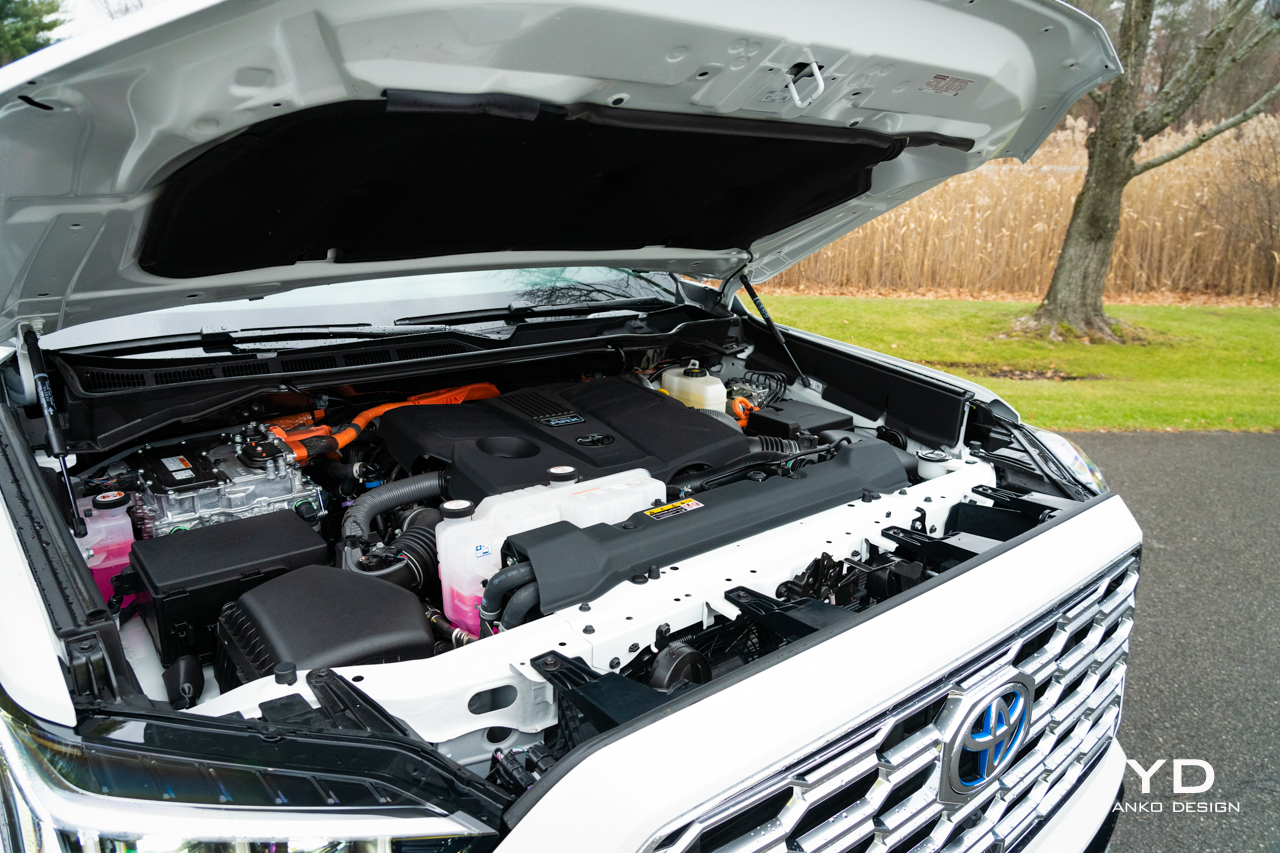
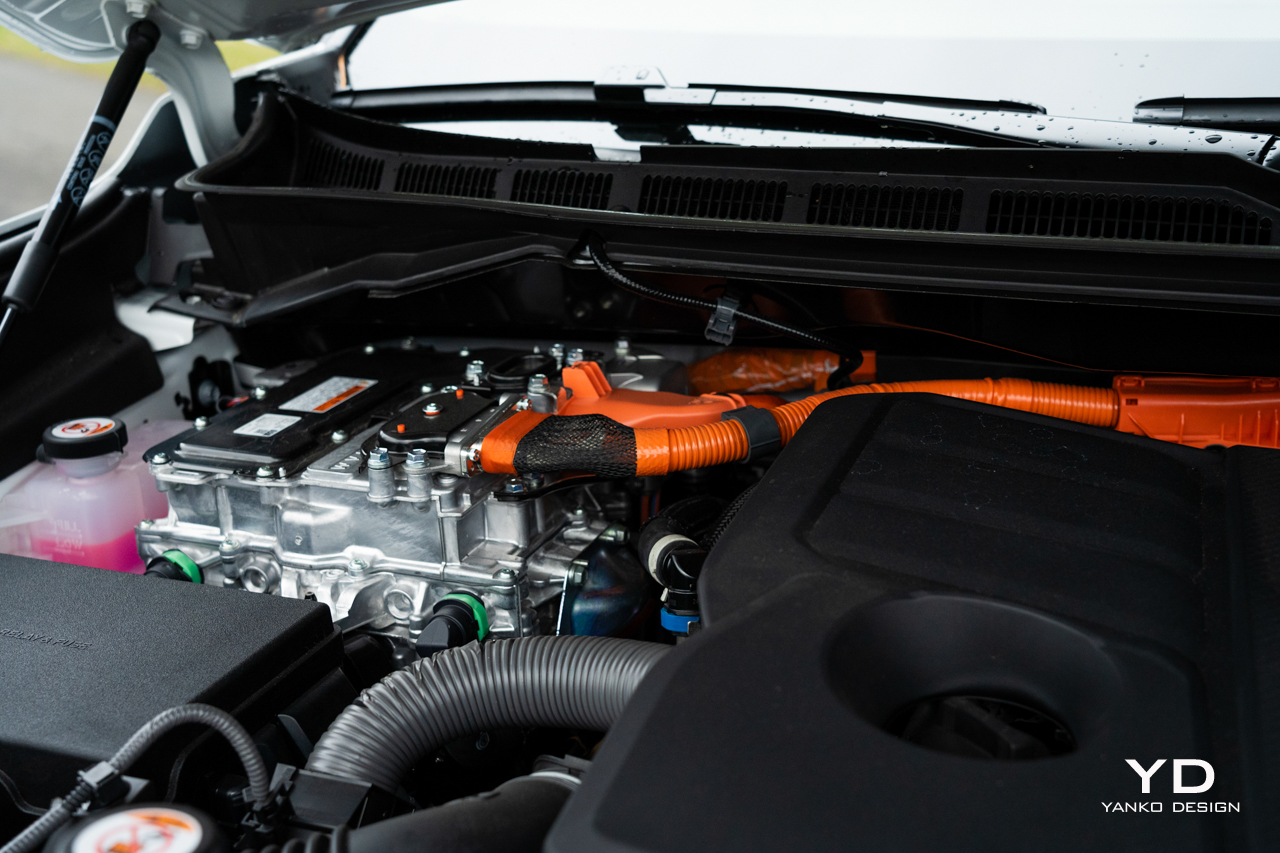
Acceleration is strong and towing healthy, the Sequoia, with its Class IV hitch, is rated to tow 8,980 pounds in Capstone trim, 9,520 if you step down to the SR5. Handling, meanwhile, is tolerably good but with some unmistakeable, truck-like vibes that harken back to its Tundra underpinnings. It’s calm and smooth on the highway and deals with minor road imperfections without too much complaint, but bigger bumps definitely upset things.
For anyone coming from a truck, like the aforementioned Tundra, this will all feel very familiar and the Sequoia is quite comfortable for the most part. But, if you’re stepping up from a smaller, crossover SUV, the driving dynamics will feel harsh. Par for the course for something that can tow this much or, indeed, hold its own after the asphalt ends. I sadly didn’t have a chance to properly test the Sequoia’s off-road chops, but with its two-speed transfer case and limited-slip differential at the rear, it should handle itself just fine in the rough stuff.
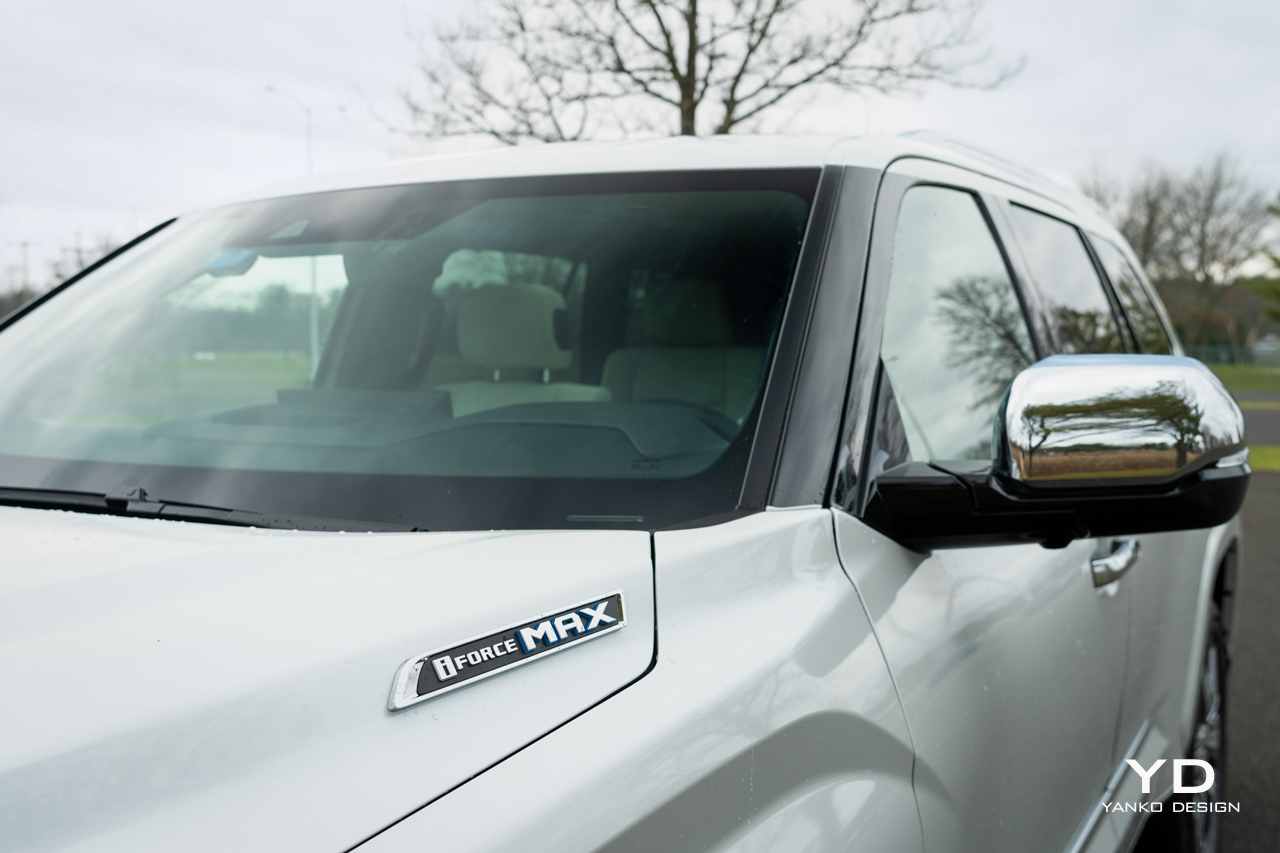
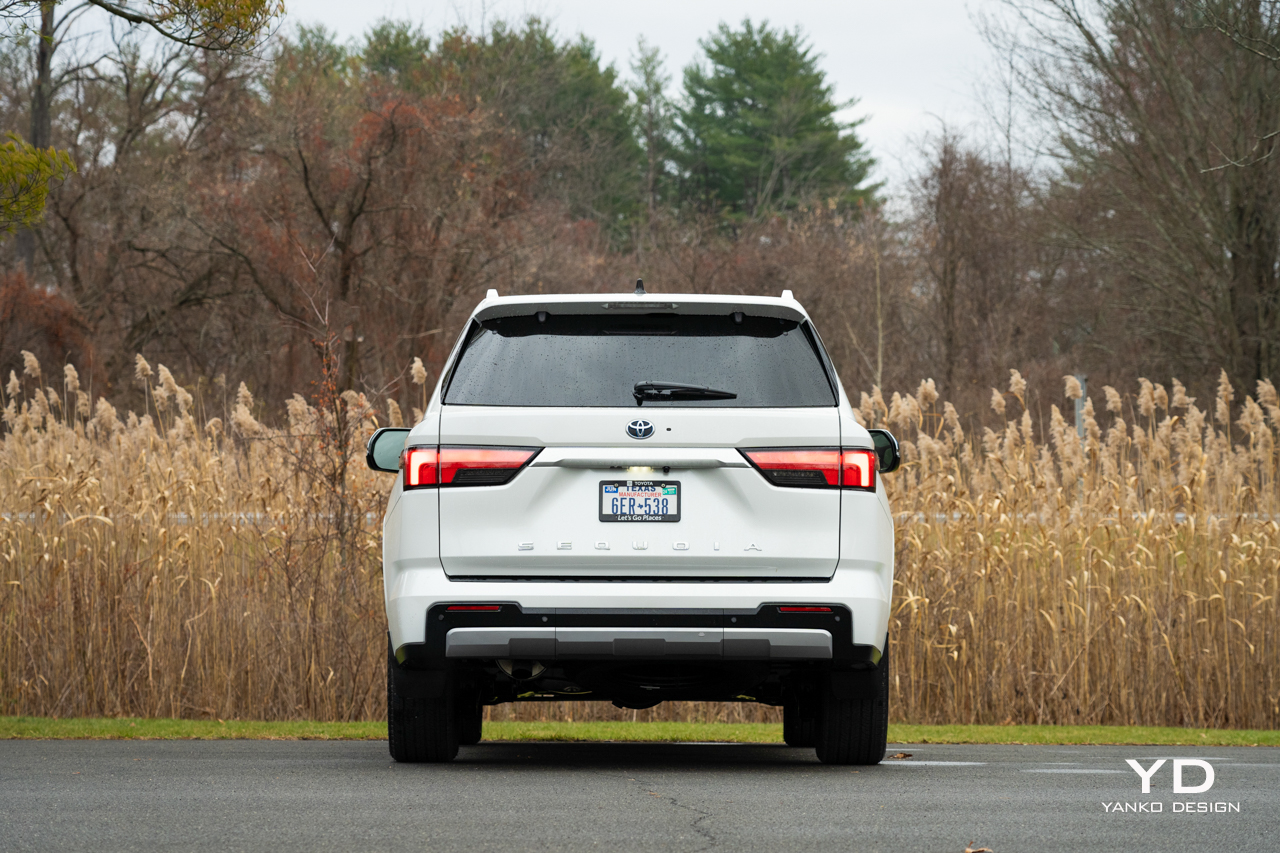
Options and Pricing
If you are more interested in challenging ruts and rocks, the TRD Pro trim might be more your style, with its locking rear differential and 2.5-inch Fox coilovers. What you see here is the Capstone trim, with a more luxurious intent. It is priced to match. Toyota lists a current base price for the Sequoia SR5 at $56,365. This 4X4 Capstone trim, with about $1,000 in options and a $1,595 destination charge, came in at a rather more dear $80,906. For that you get all the extra flare on the outside, plush posh, multicolor ambient lighting inside, nicer materials, and auto-leveling air suspension.
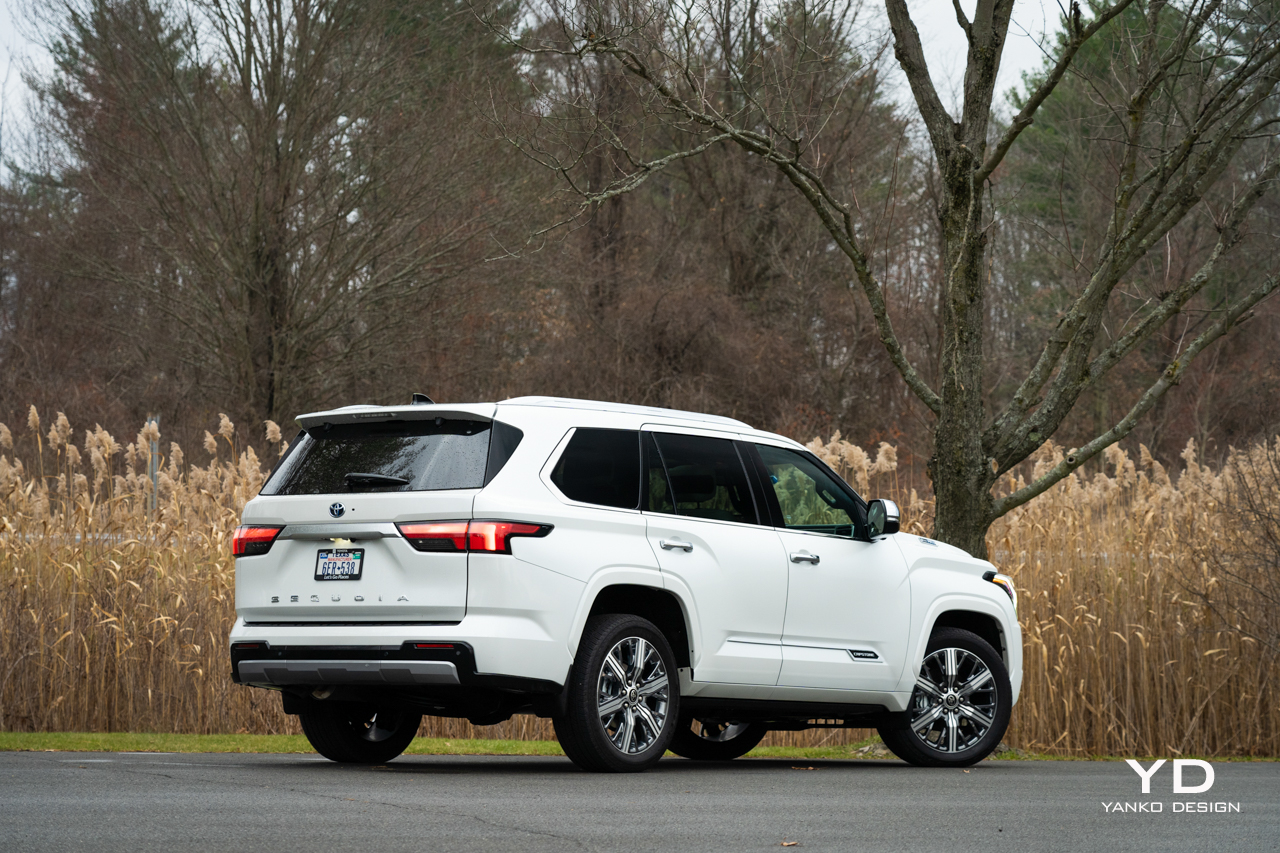
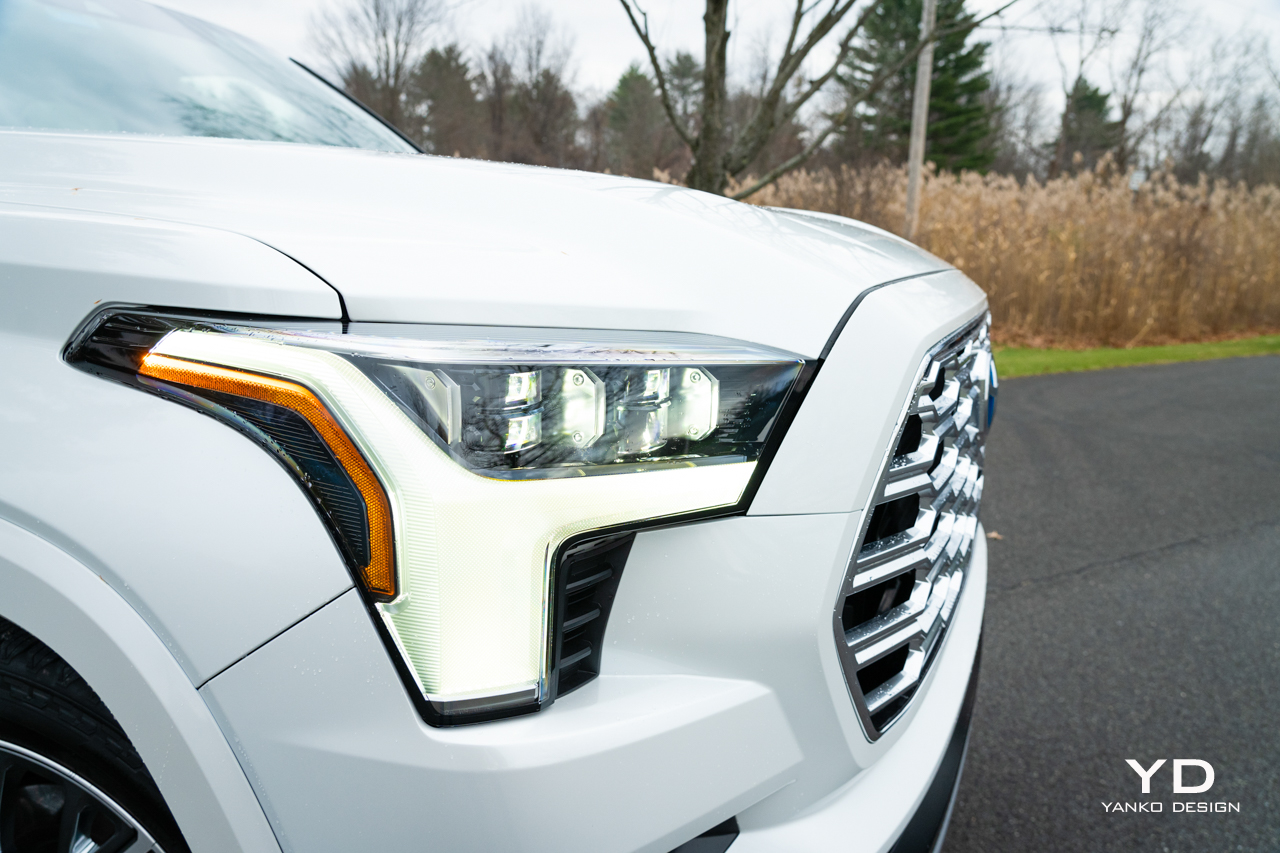
Capstone doesn’t really get you much beyond the Platinum trim, which starts about $5,000 cheaper. That seems like the right place to start.
So it’s big, capable, has plenty of room inside and out, and wraps it all up in a stately look that gives it the presence to match its volume. It is, in other words, a great choice for those who want to haul lots of folks, tow lots of things, and go to lots of places that aren’t necessarily paved. Toyota’s refreshed big boy delivers.
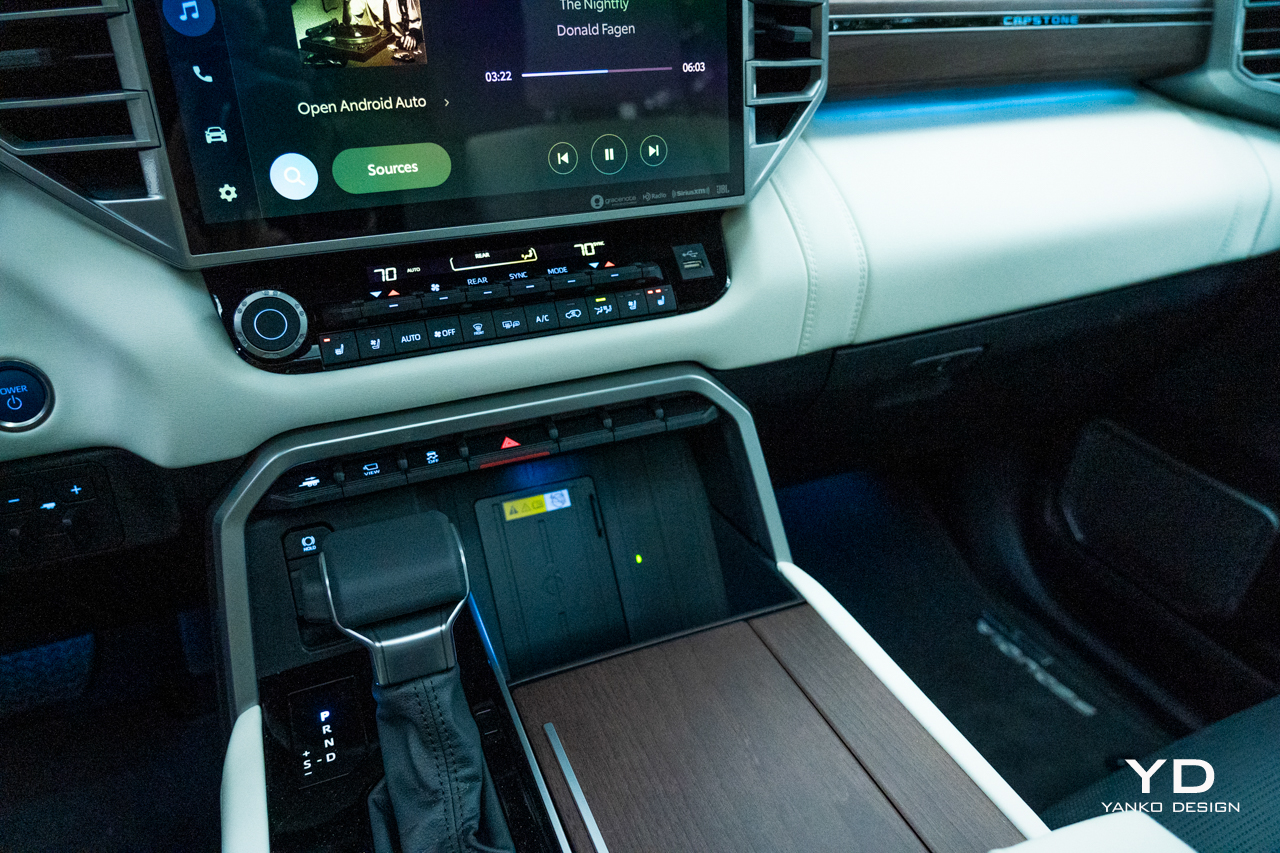
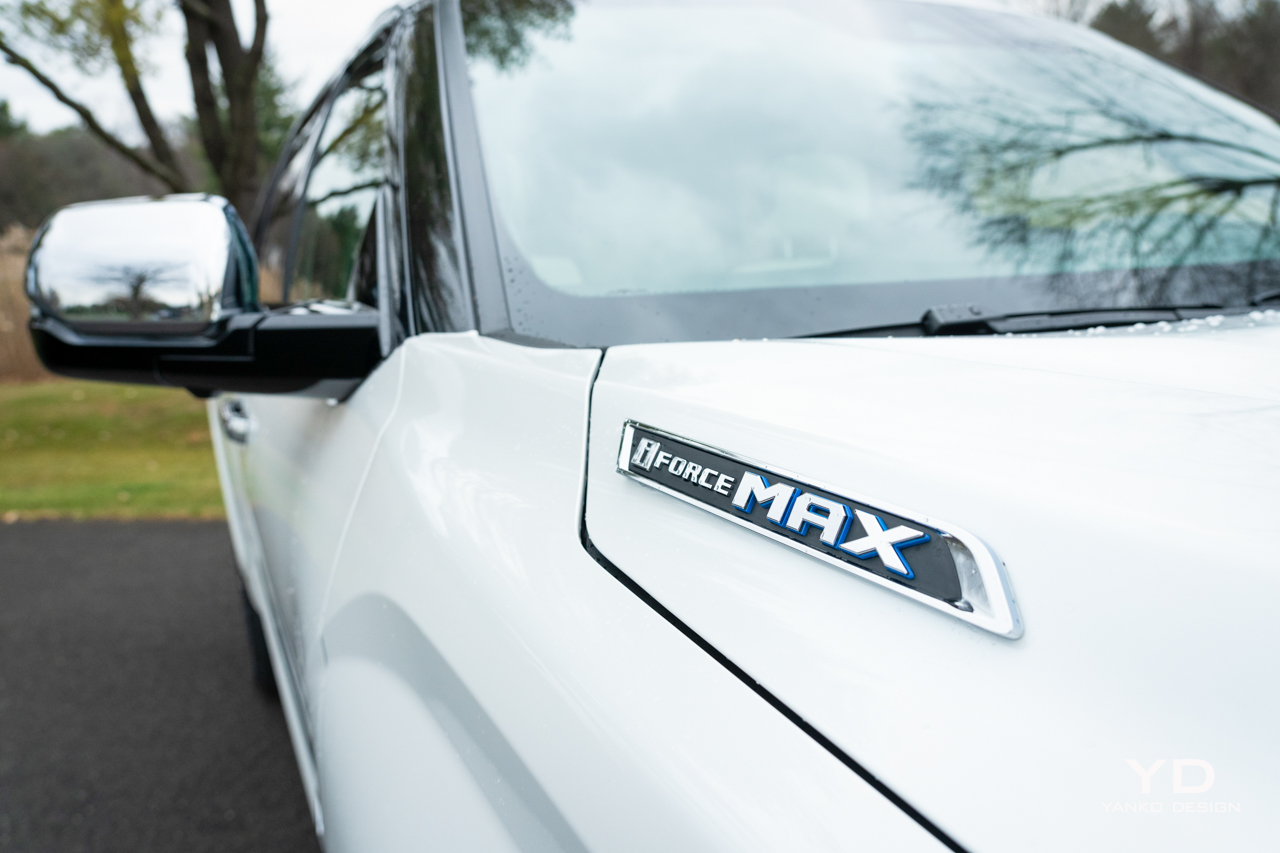
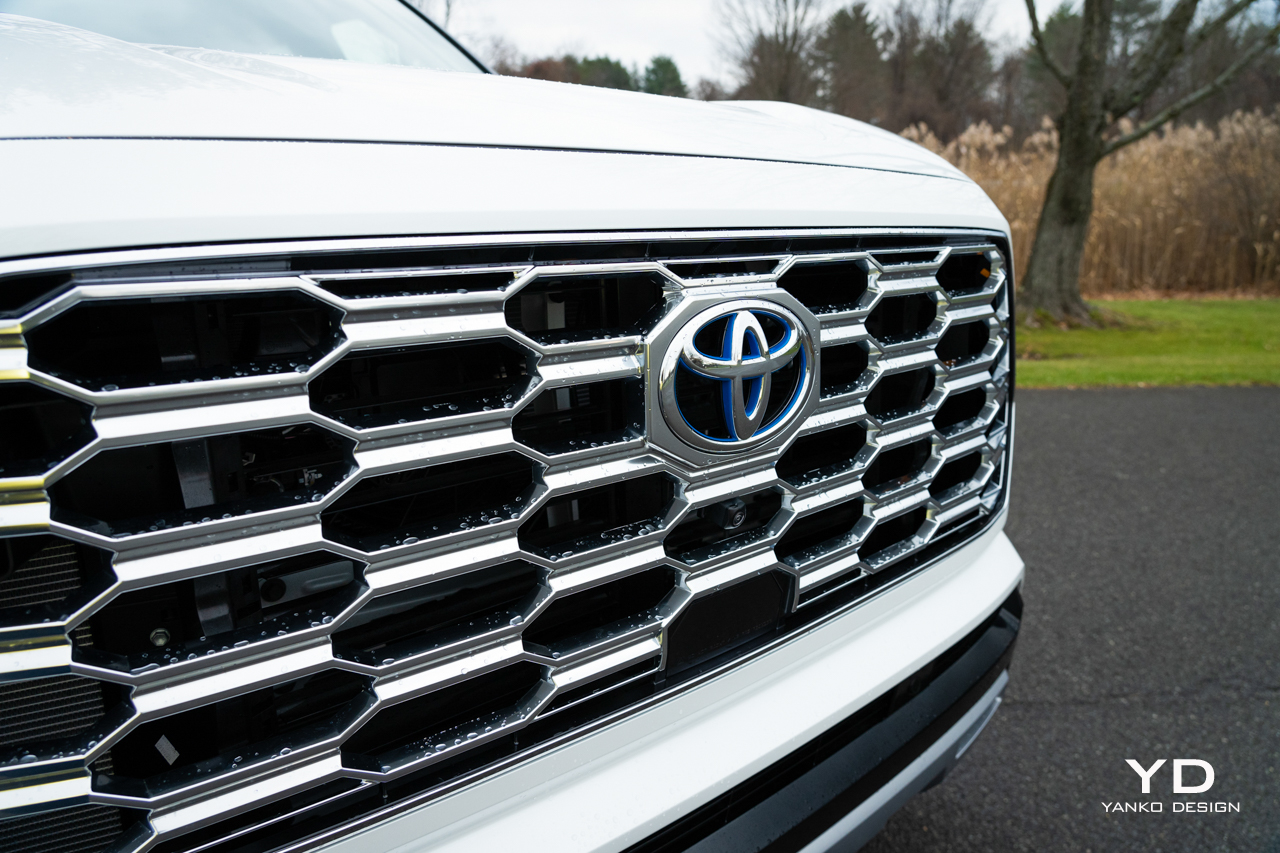
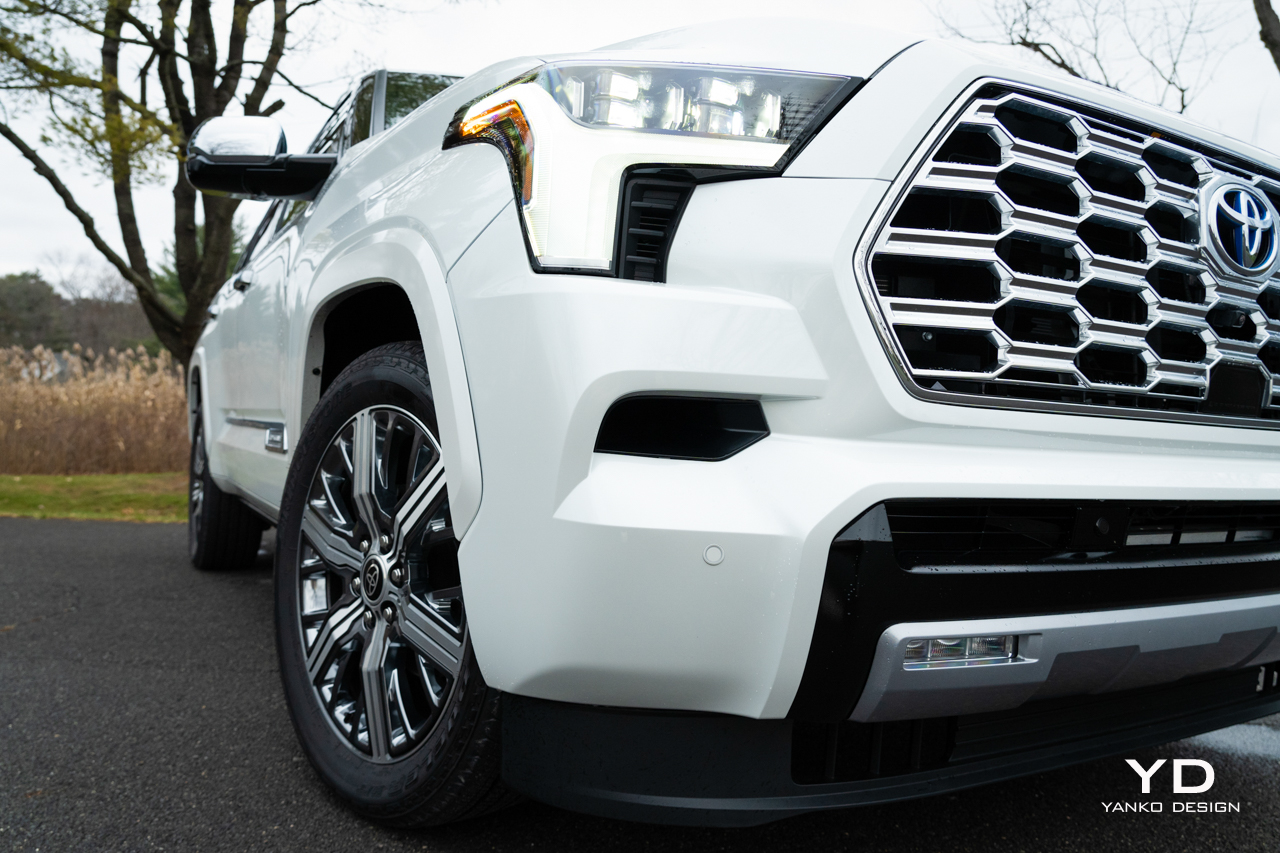
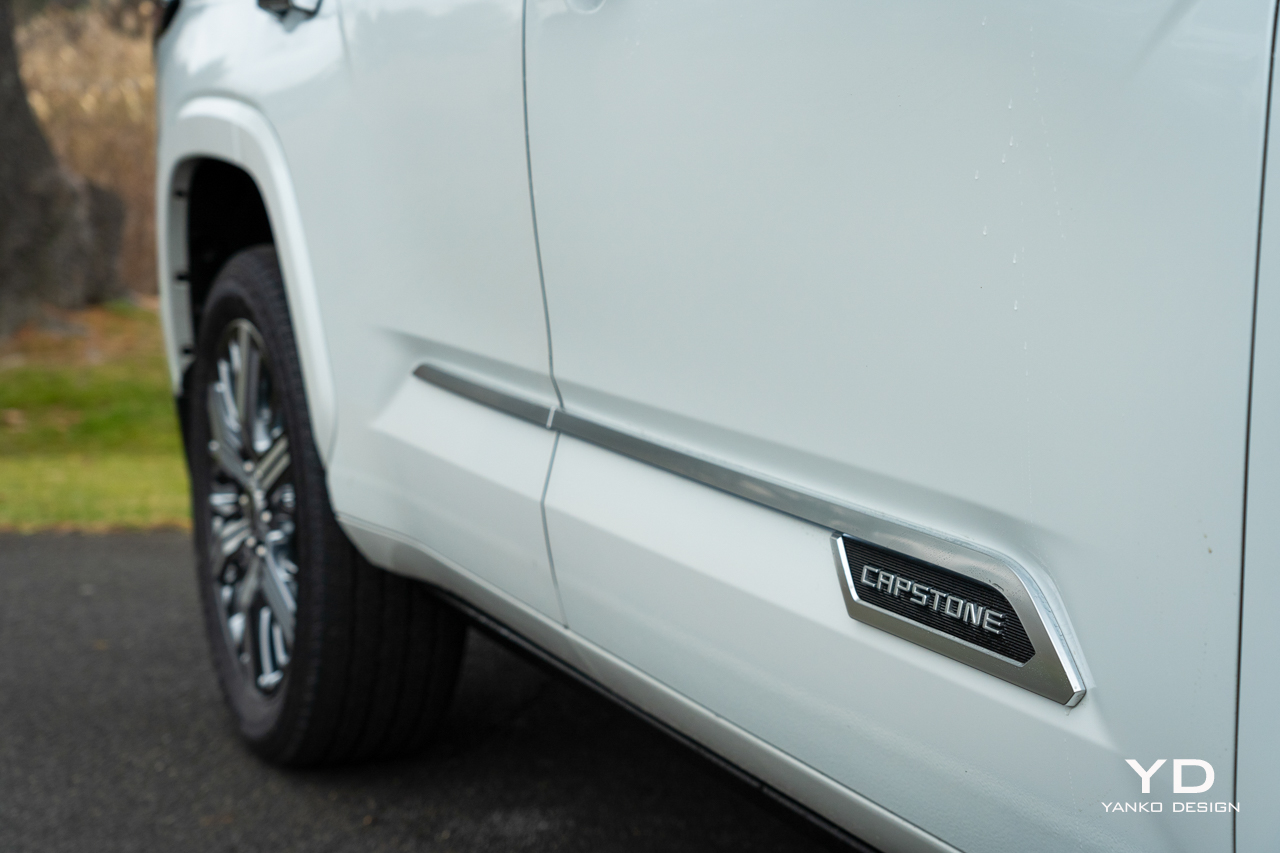
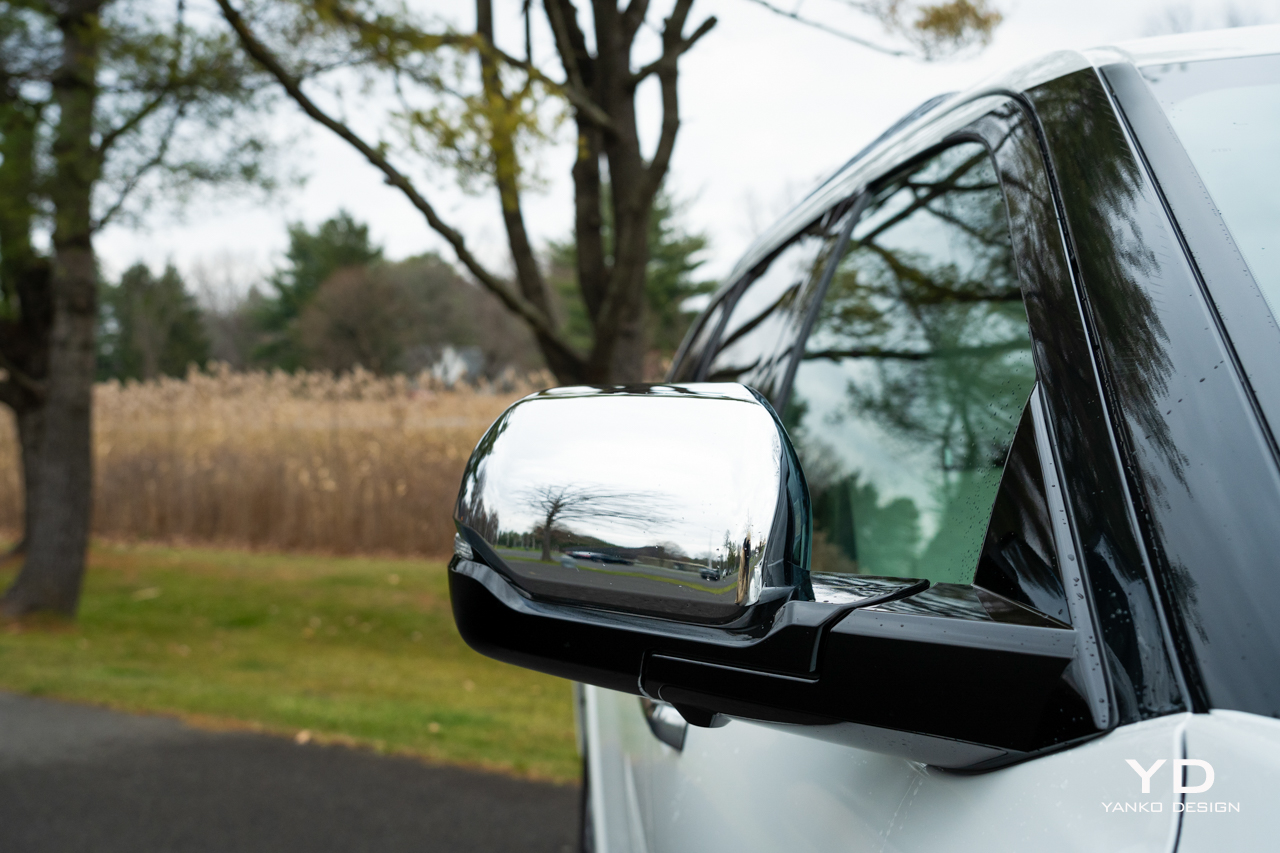
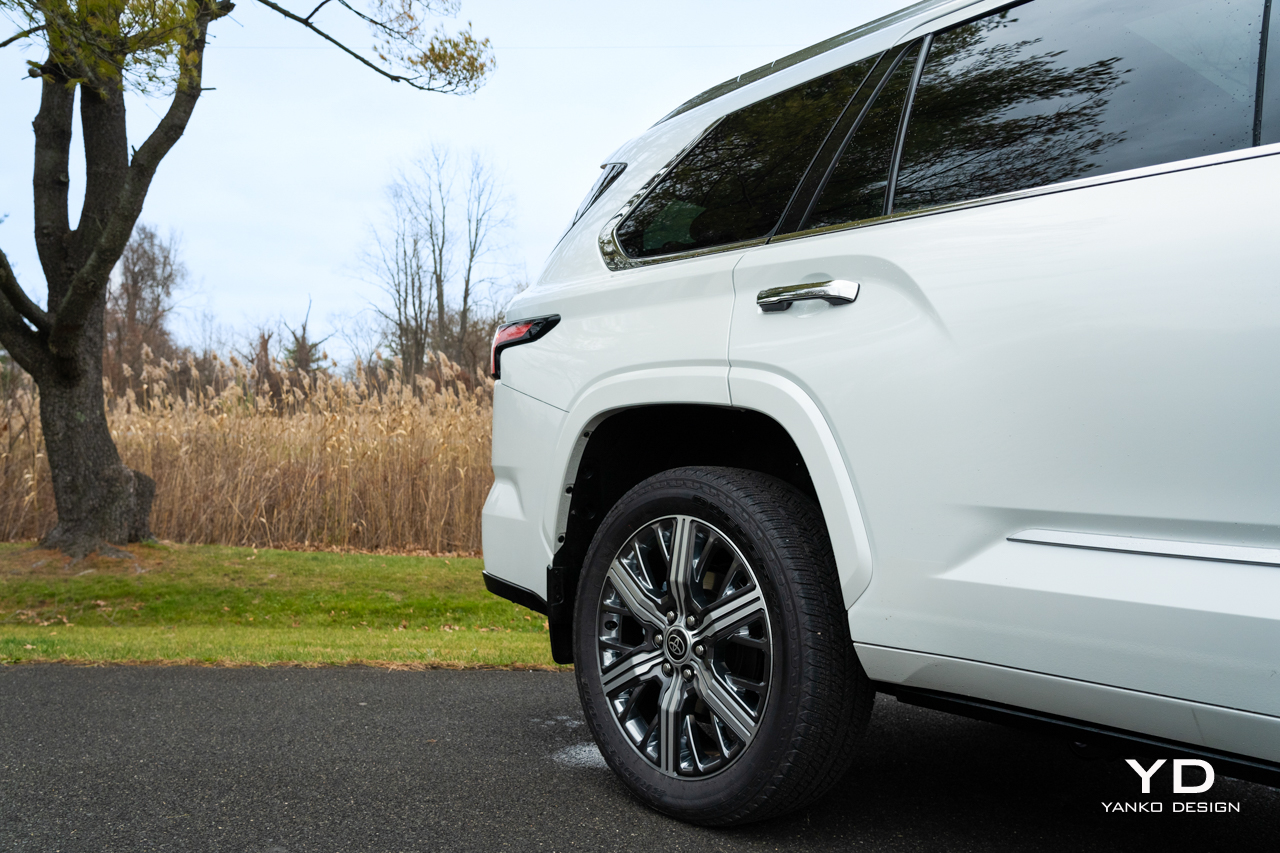
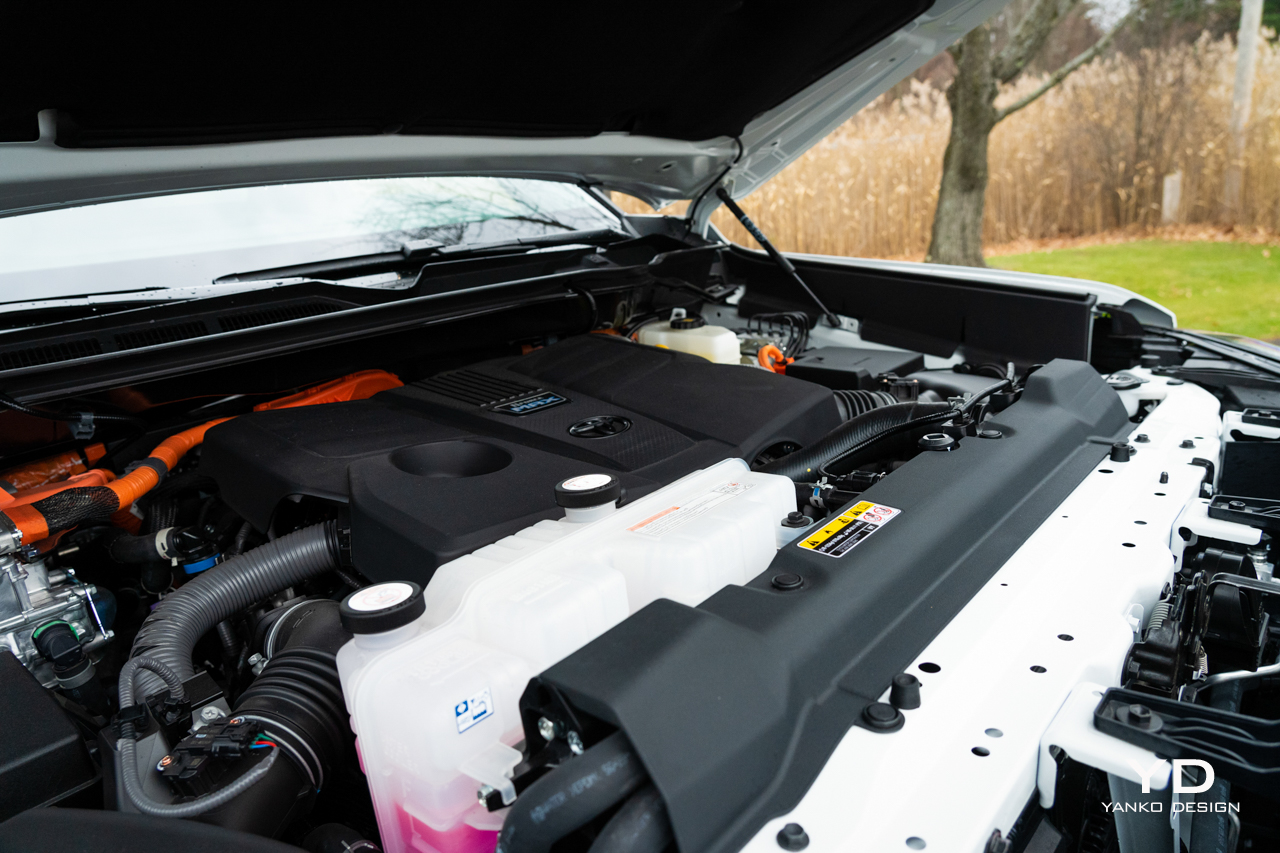
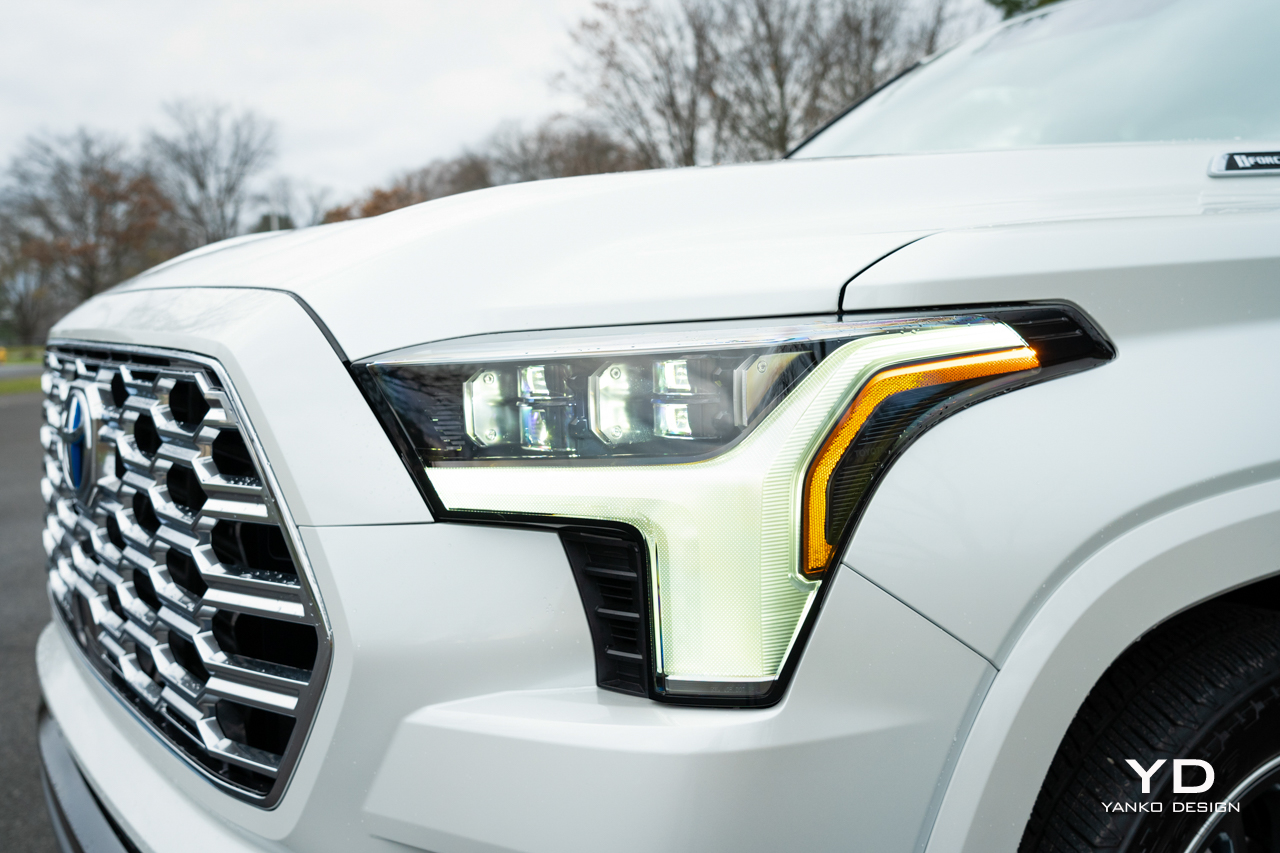
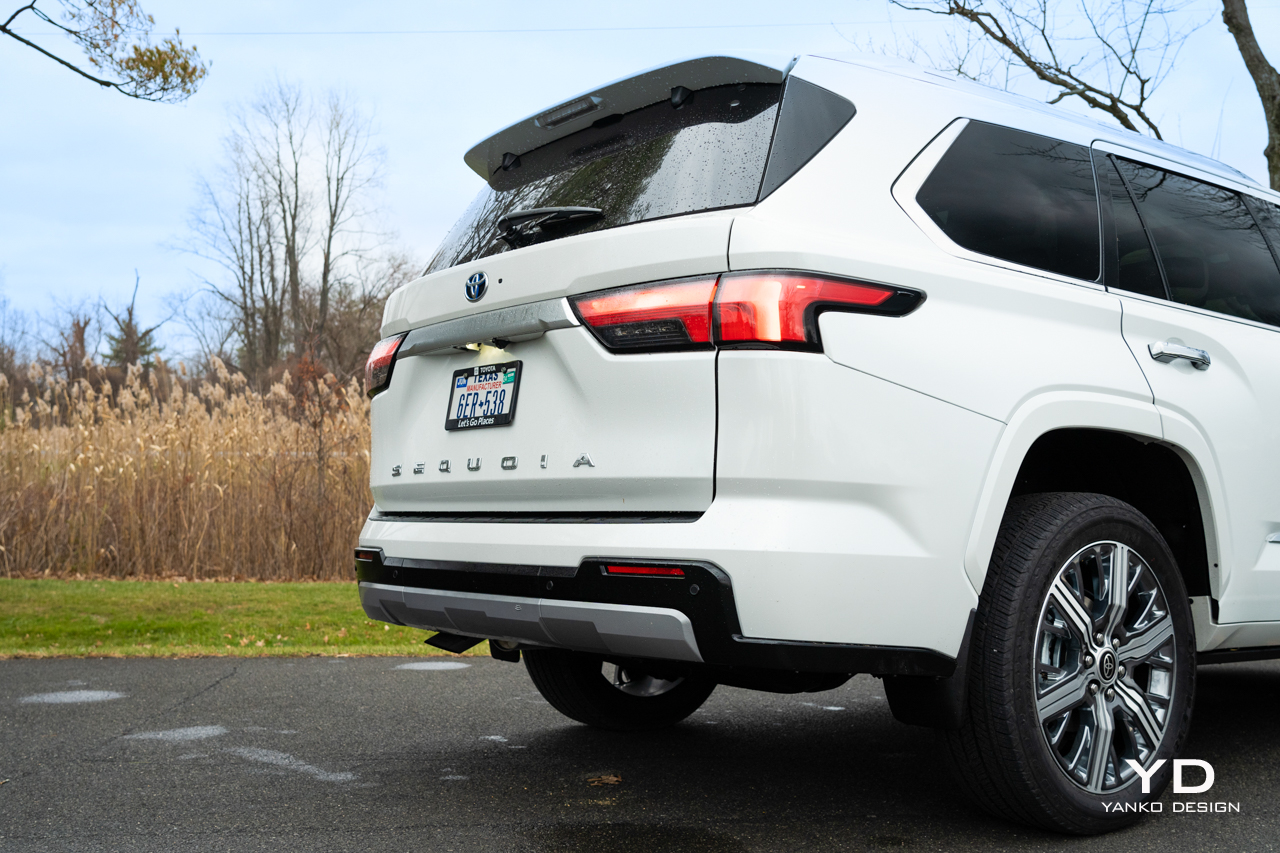
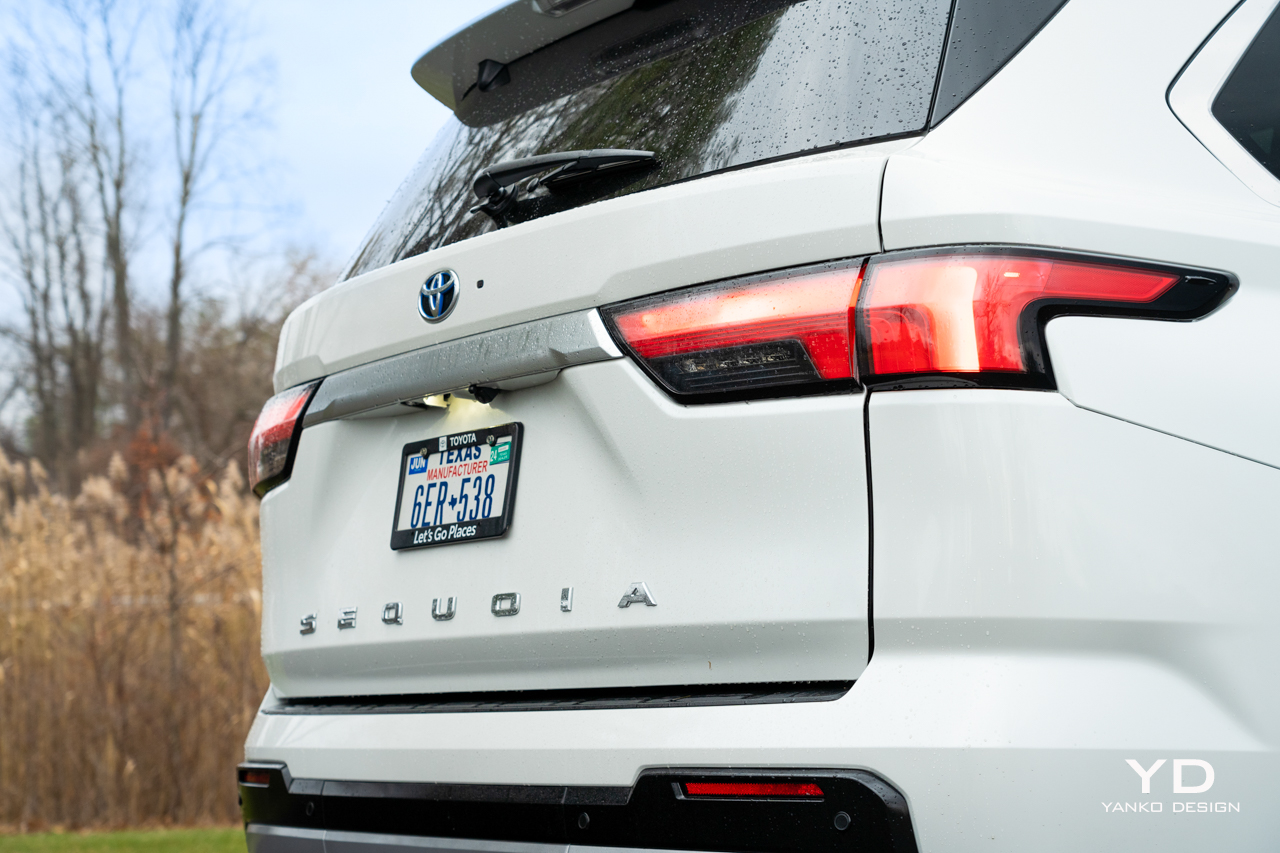
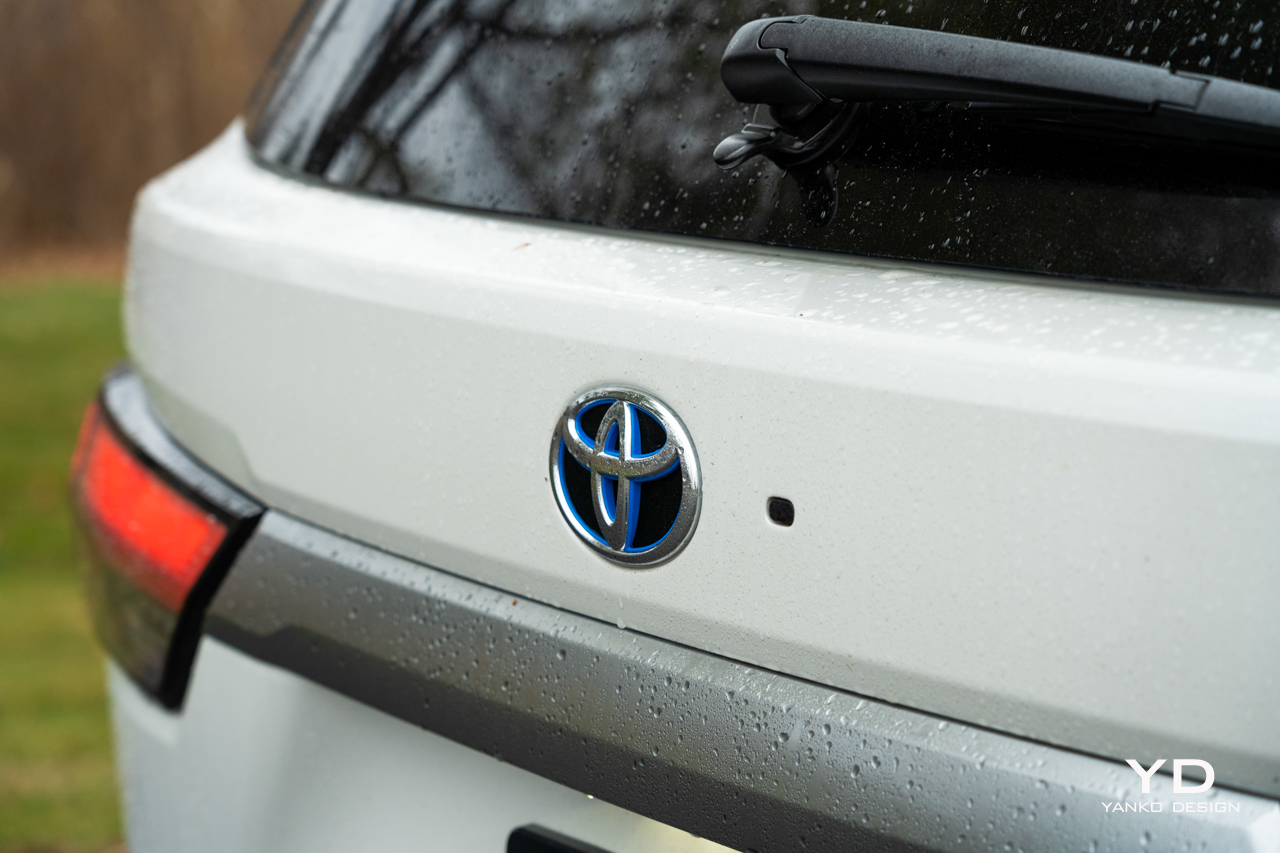
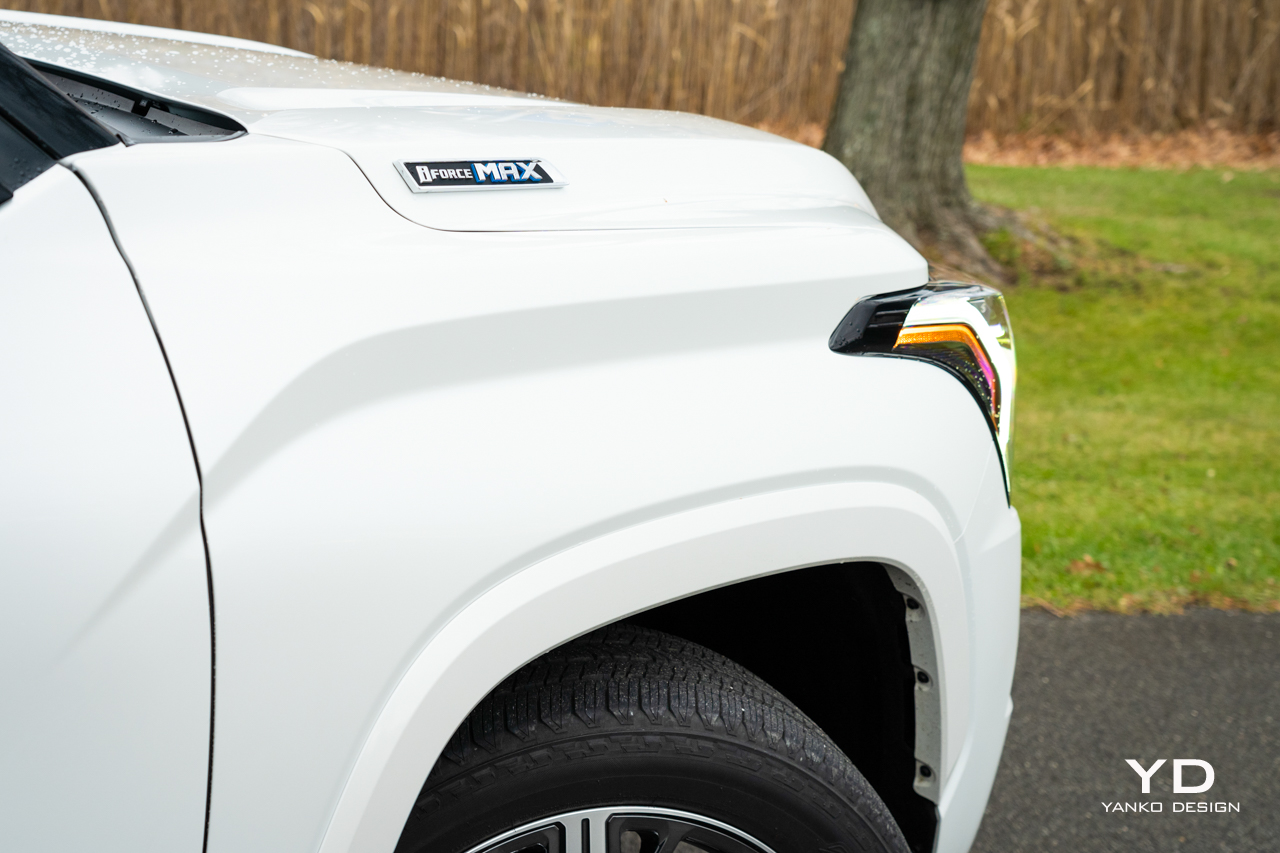
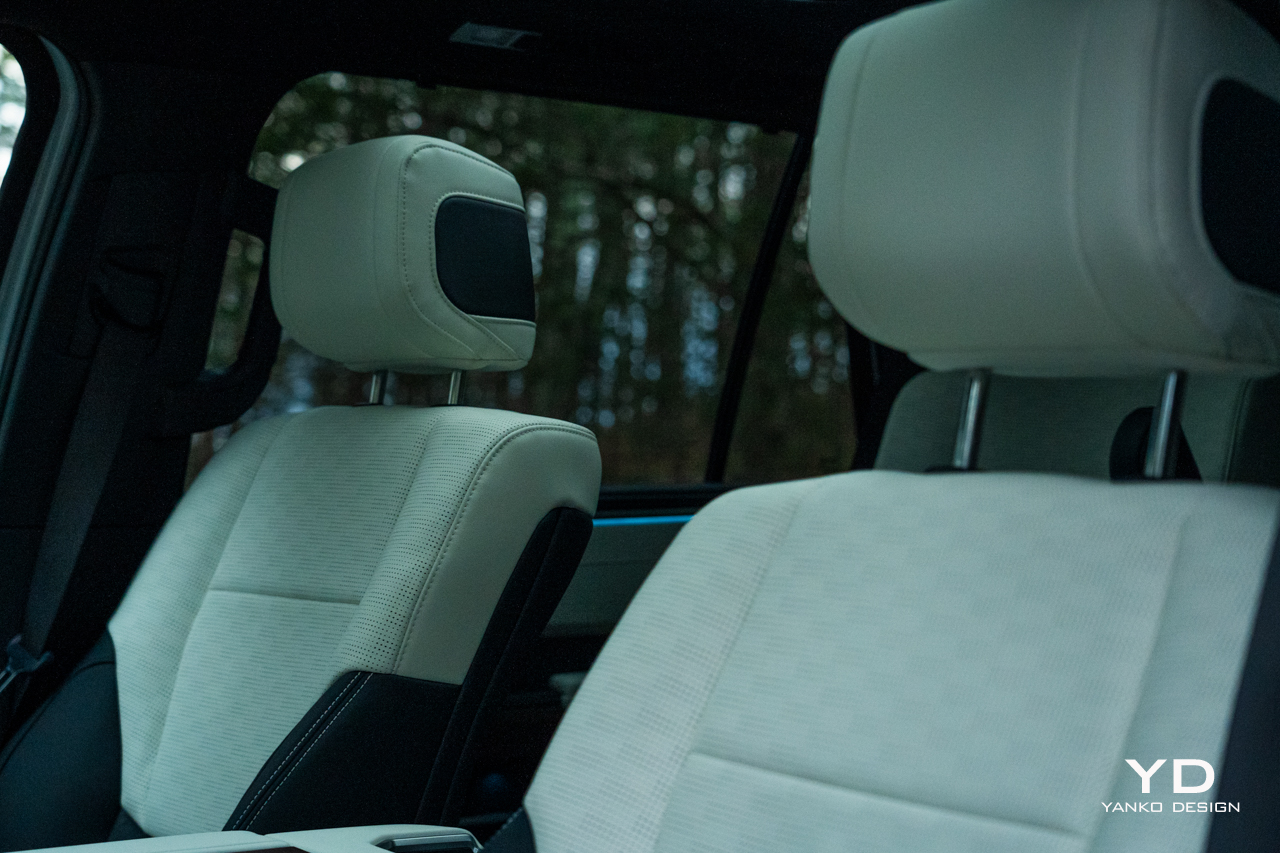
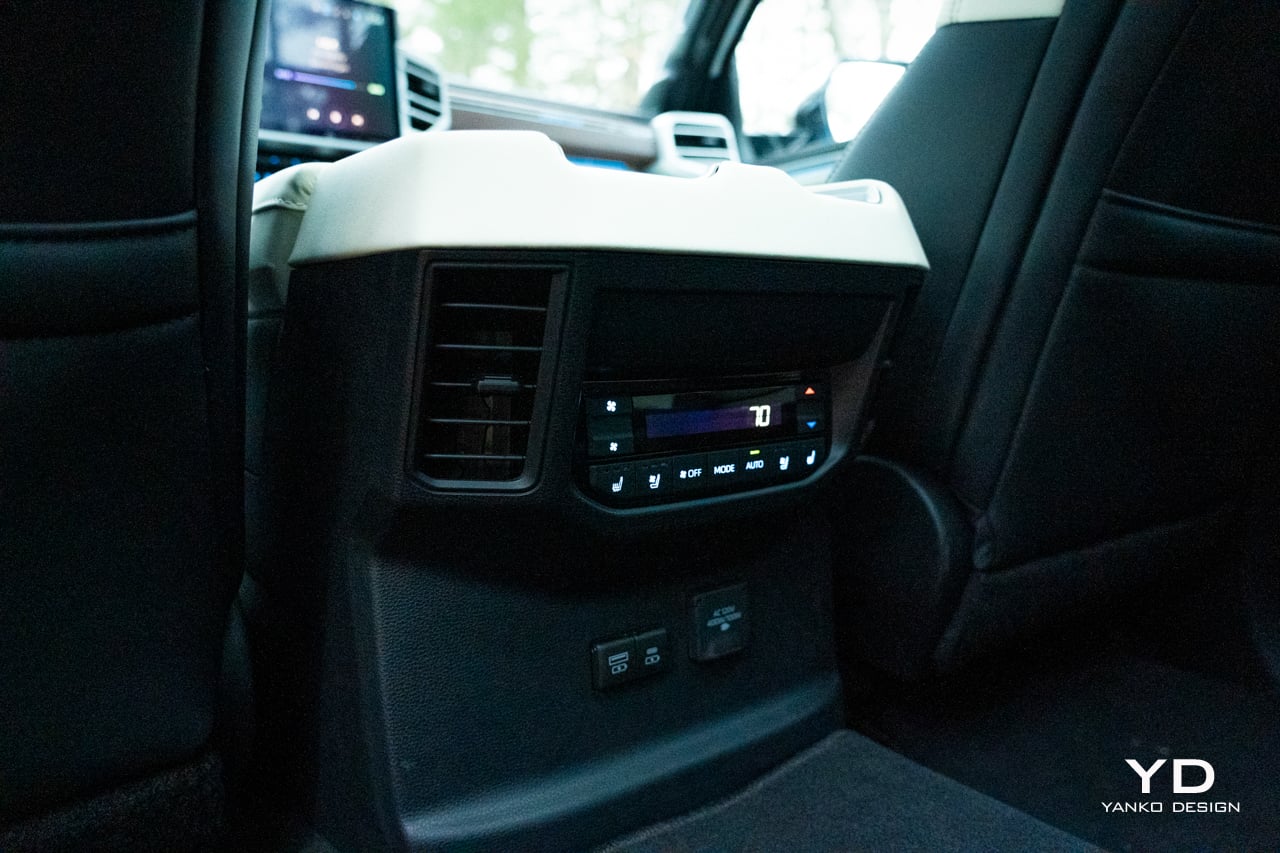
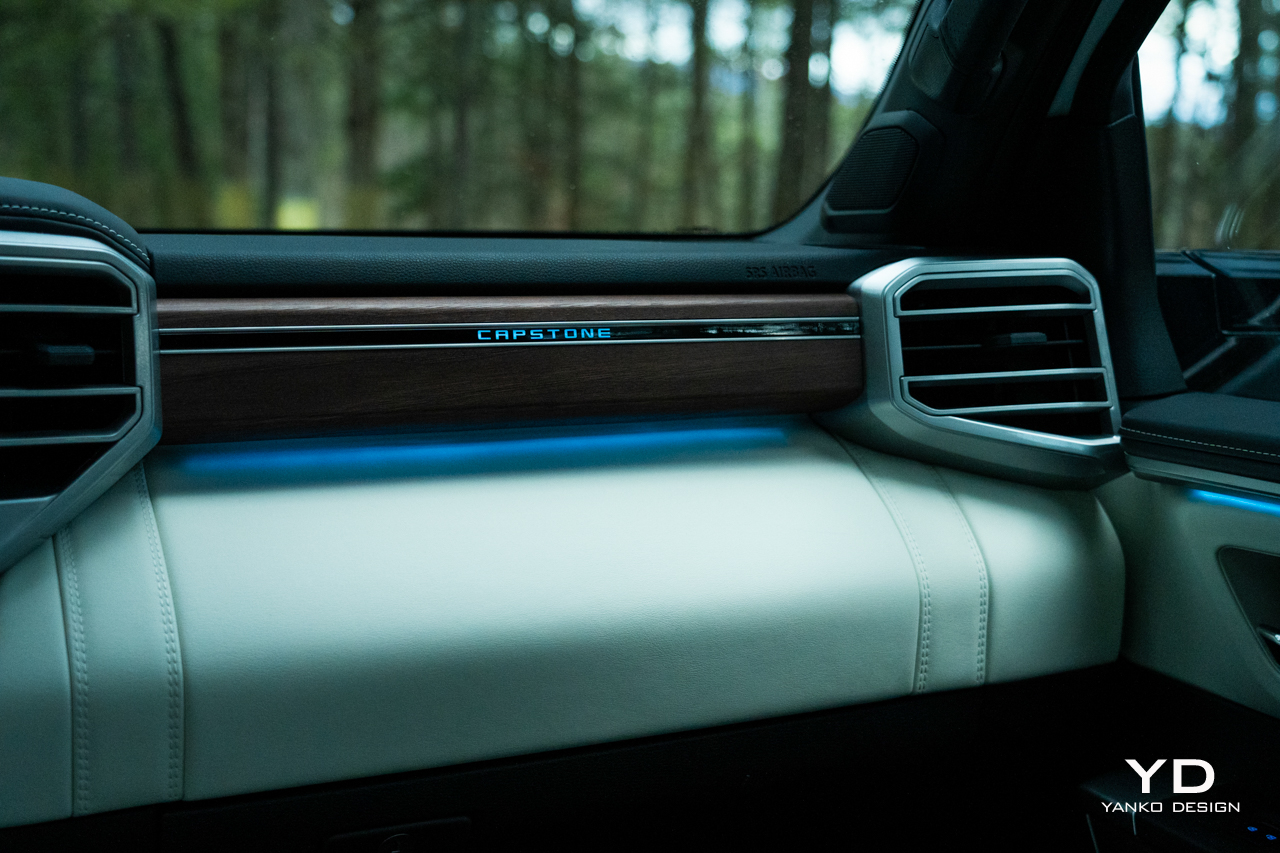
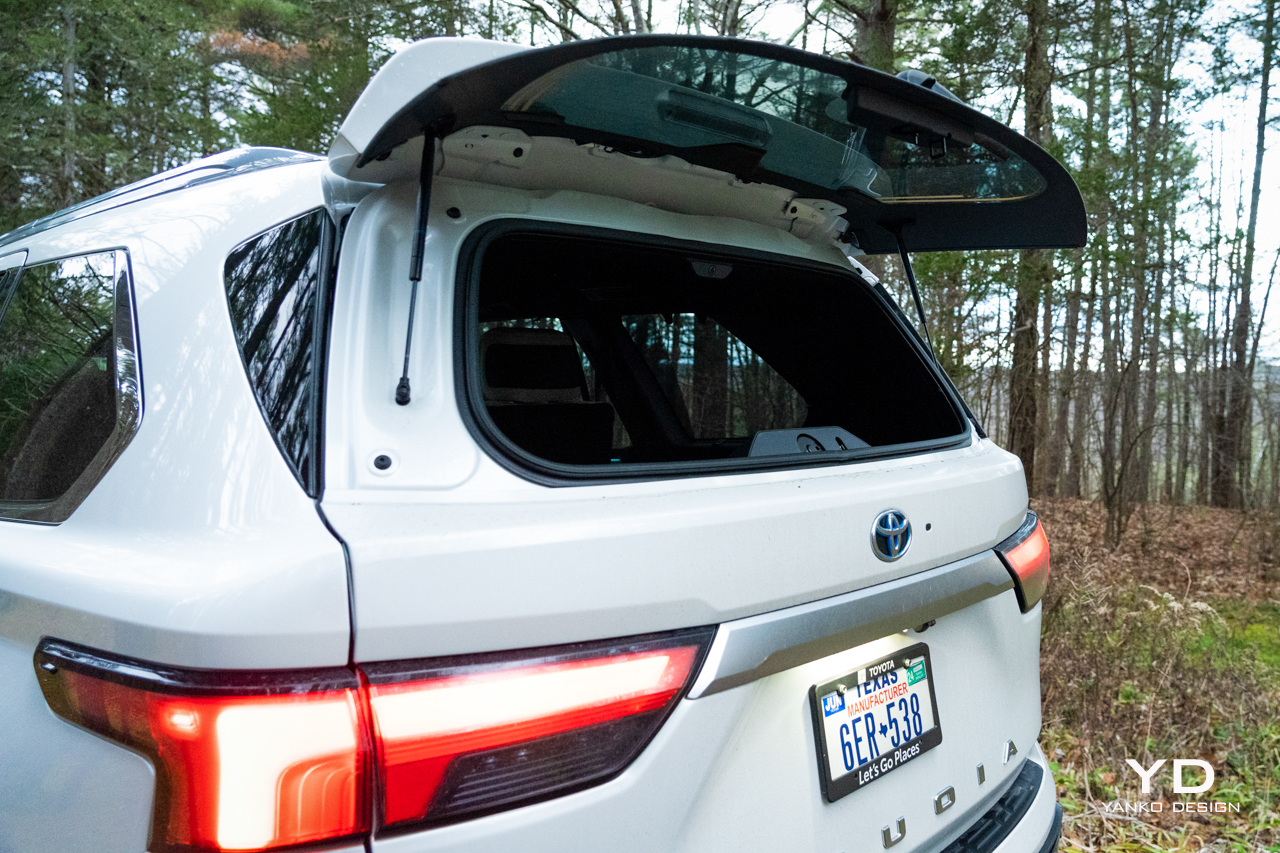
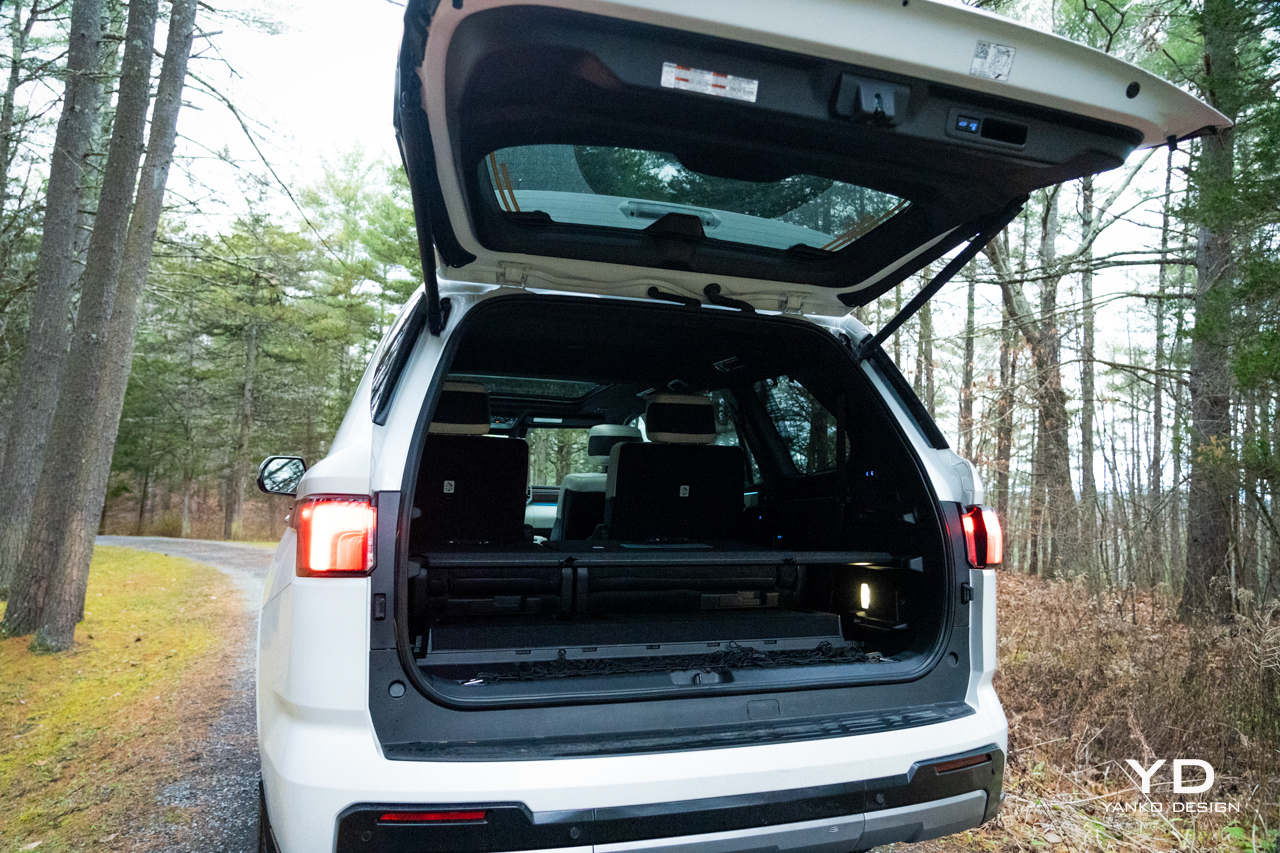
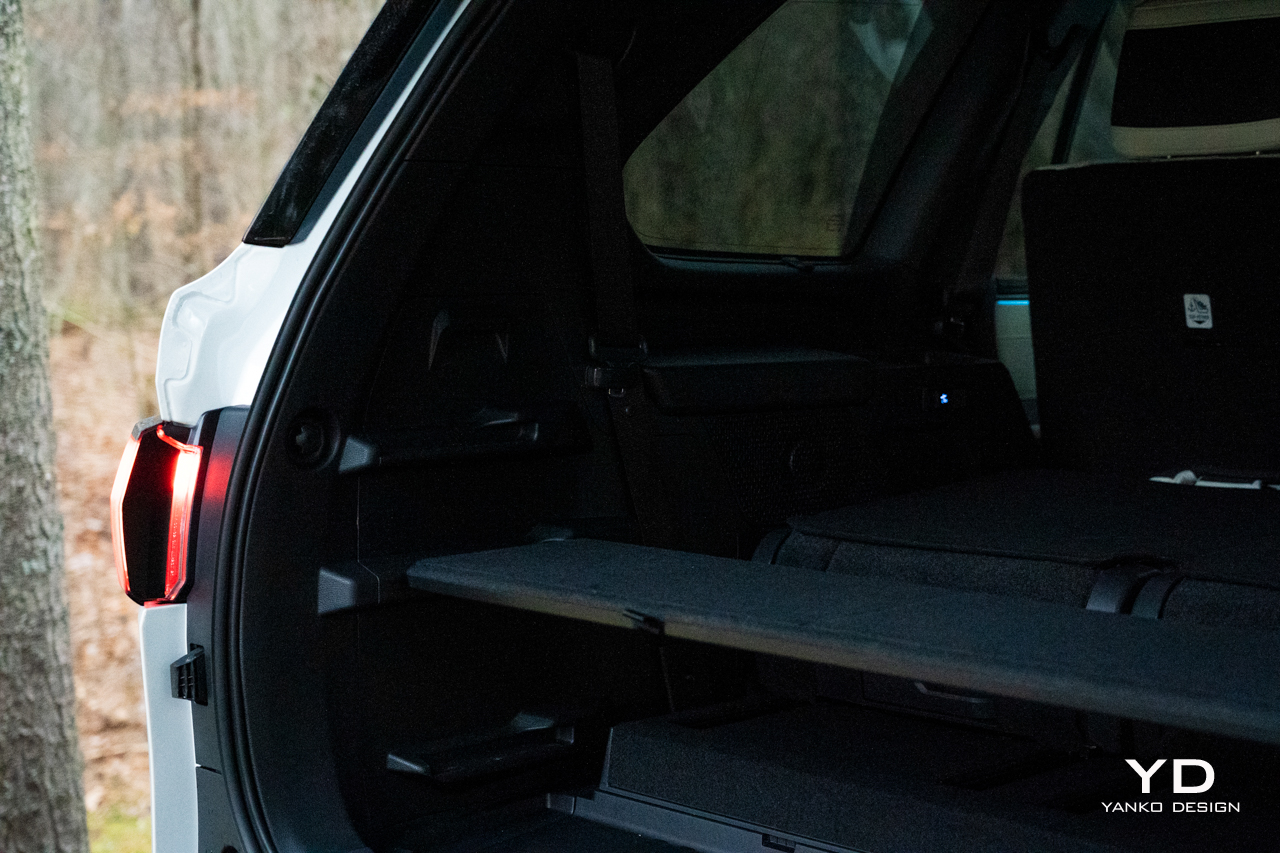
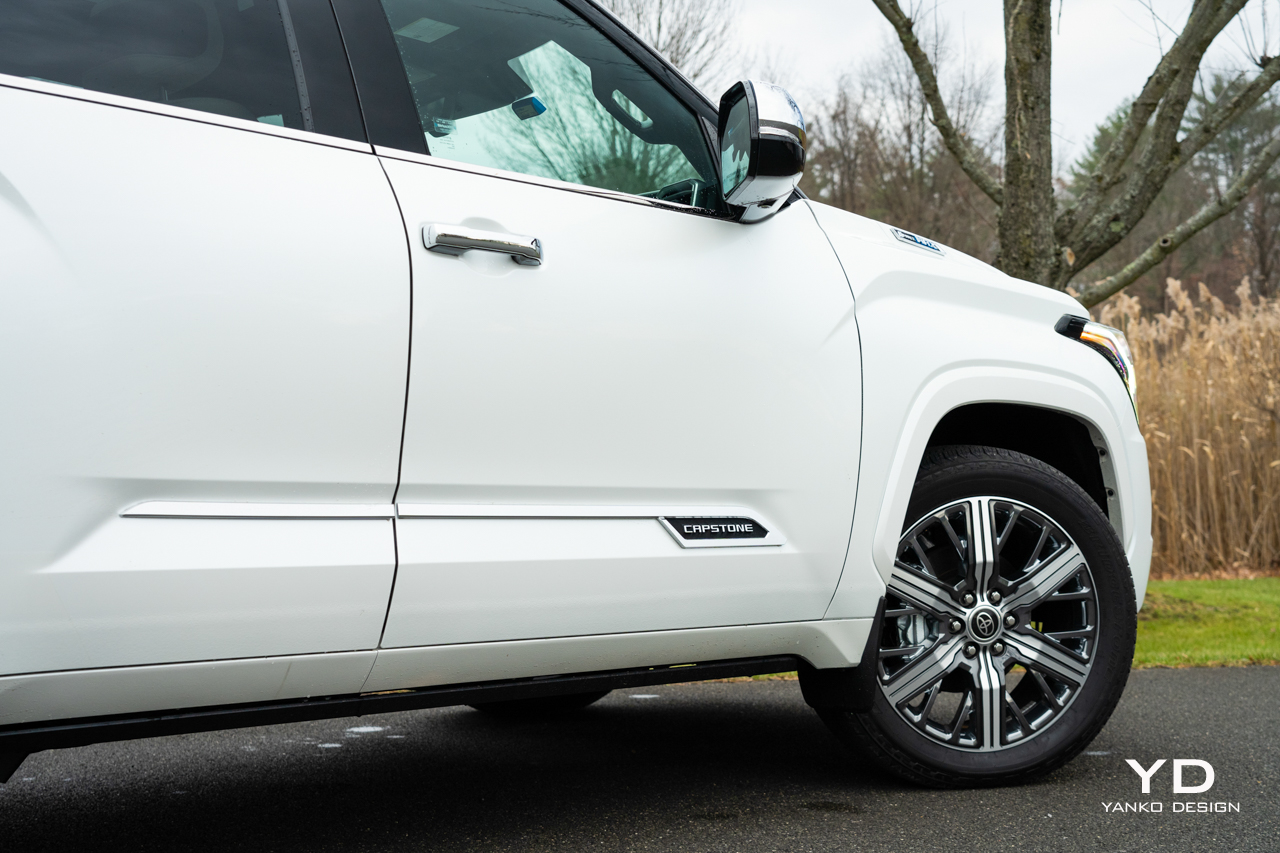
The post 2023 Toyota Sequoia review first appeared on Yanko Design.
via https://ift.tt/eVqZpnA
Post a Comment
Note: Only a member of this blog may post a comment.